 |
 |
 |
 |
 |
 |
 |
 |
 |
 |
|
KICP News
|
KICP in the News, 2017
Research reinforces role of supernovae in clocking the universe UChicago News, January 4, 2017 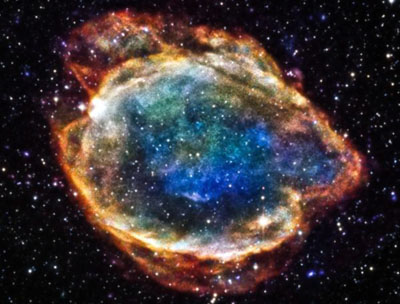 New research confirms the role Type Ia supernovae, like G299 pictured above, play in measuring universe expansion. Courtesy of NASA How much light does a supernova shed on the history of universe? New research by cosmologists at the University of Chicago and Wayne State University confirms the accuracy of Type Ia supernovae in measuring the pace at which the universe expands. The findings support a widely held theory that the expansion of the universe is accelerating and such acceleration is attributable to a mysterious force known as dark energy. The findings counter recent headlines that Type Ia supernova cannot be relied upon to measure the expansion of the universe. Using light from an exploding star as bright as entire galaxies to determine cosmic distances led to the 2011 Nobel Prize in physics. The method relies on the assumption that, like lightbulbs of a known wattage, all Type Ia supernovae are thought to have nearly the same maximum brightness when they explode. Such consistency allows them to be used as beacons to measure the heavens. The weaker the light, the farther away the star. But the method has been challenged in recent years because of findings the light given off by Type Ia supernovae appears more inconsistent than expected. "The data that we examined are indeed holding up against these claims of the demise of Type Ia supernovae as a tool for measuring the universe," said Daniel Scolnic, a postdoctoral scholar at UChicago's Kavli Institute for Cosmological Physics and co-author of the new research published in Monthly Notices of the Royal Astronomical Society. "We should not be persuaded by these other claims just because they got a lot of attention, though it is important to continue to question and strengthen our fundamental assumptions." One of the latest criticisms of Type Ia supernovae for measurement concluded the brightness of these supernovae seems to be in two different subclasses, which could lead to problems when trying to measure distances. In the new research led by David Cinabro, a professor at Wayne State, Scolnic, Rick Kessler, a senior researcher at the Kavli Institute, and others, they did not find evidence of two subclasses of Type Ia supernovae in data examined from the Sloan Digital Sky Survey Supernovae Search and Supernova Legacy Survey. The recent papers challenging the effectiveness of Type Ia supernovae for measurement used different data sets. A secondary criticism has focused on the way Type Ia supernovae are analyzed. When scientists found that distant Type Ia supernovae were fainter than expected, they concluded the universe is expanding at an accelerating rate. That acceleration is explained through dark energy, which scientists estimate makes up 70 percent of the universe. The enigmatic force pulls matter apart, keeping gravity from slowing down the expansion of the universe. Yet a substance that makes up 70 percent of the universe but remains unknown is frustrating to a number of cosmologists. The result was a reevaluation of the mathematical tools used to analyze supernovae that gained attention in 2015 by arguing that Type Ia supernovae don't even show dark energy exists in the first place. Scolnic and colleague Adam Riess, who won the 2011 Nobel Prices for the discovery of the accelerating universe, wrote an article for Scientific American Oct. 26, 2016, refuting the claims. They showed that even if the mathematical tools to analyze Type Ia supernovae are used "incorrectly," there is still a 99.7 percent chance the universe is accelerating. The new findings are reassuring for researchers who use Type Ia supernovae to gain an increasingly precise understanding of dark energy, said Joshua A. Frieman, senior staff member at the Fermi National Accelerator Laboratory who was not involved in the research. "The impact of this work will be to strengthen our confidence in using Type Ia supernovae as cosmological probes," he said. Citation: "Search for Type Ia Supernova NUV-Optical Subclasses," by David Cinabro and Jake Miller (Wayne State University); and Daniel Scolnic and Ashley Li (Kavli Institute for Cosmological Physics at the University of Chicago); and Richard Kessler (Kavli Institute for Cosmological Physics at University of Chicago and the Department of Astronomy and Astrophysics at the University of Chicago). Monthly Notices of the Royal Astronomical Society, November 2016. DOI: 10.1093/mnras/stw3109" Read more >> Related Links: KICP Members: Joshua A. Frieman; Richard Kessler; Daniel M. Scolnic Scientific projects: SDSS Supernova Survey (SDSS SS); Sloan Digital Sky Survey (SDSS) Galactic X-rays could point to dark matter proof BBC News, February 2, 2017 by Edwin Cartlidge, BBC News KICP Senior Member Dan Hooper discusses a recent claim of the detection of the 3.5 keV X-ray line in our Galaxy with the BBC. "The new paper claims a modest detection," said Dr Hooper, "but it doesn't sway me very strongly at this point." Read more >> Related Links: KICP Members: Daniel Hooper Cosmos Controversy: The Universe Is Expanding, but How Fast? The New York Times, February 21, 2017 by Dennis Overbye, The New York Times A small discrepancy in the value of a long-sought number has fostered a debate about just how well we know the cosmos. There is a crisis brewing in the cosmos, or perhaps in the community of cosmologists. The universe seems to be expanding too fast, some astronomers say. Recent measurements of the distances and velocities of faraway galaxies don't agree with a hard-won "standard model" of the cosmos that has prevailed for the past two decades. The latest result shows a 9 percent discrepancy in the value of a long-sought number called the Hubble constant, which describes how fast the universe is expanding. But in a measure of how precise cosmologists think their science has become, this small mismatch has fostered a debate about just how well we know the cosmos. "If it is real, we will learn new physics," said Wendy Freedman of the University of Chicago, who has spent most of her career charting the size and growth of the universe. Michael S. Turner of the University of Chicago said, "If the discrepancy is real, this could be a disruption of the current highly successful standard model of cosmology and just what the younger generation wants - a chance for big discoveries, new insights and breakthroughs." Read more >> Related Links: KICP Members: Wendy L. Freedman; Daniel M. Scolnic; Michael S. Turner Abigail Vieregg has been awarded a Sloan Research Fellowship The University of Chicago News Office, February 21, 2017  Five UChicago faculty members have earned 2017 Sloan Research Fellowships: Bryan Dickinson, assistant professor of chemistry; Suriyanarayanan Vaikuntanathan, assistant professor of chemistry; Joseph Vavra, associate professor of economics at the University of Chicago Booth School of Business; Abigail Vieregg, assistant professor of physics; and Alessandra Voena, associate professor of economics. Abigail Vieregg is interested in answering questions about the nature of the universe at its highest energies through experimental work in particle astrophysics and cosmology. In particle astrophysics, she focuses on searching for the highest energy neutrinos that come from the most energetic sources in the universe. In cosmology, Vieregg works with a suite of telescopes at the South Pole to help determine what happened during the first moments after the Big Bang by measuring the polarization of the cosmic microwave background. Vieregg was a NASA Earth and Space Sciences Graduate Fellow at UCLA and a National Science Foundation Office of Polar Programs Postdoctoral Fellow at the Harvard-Smithsonian Center for Astrophysics. Vieregg joined the UChicago faculty in 2014. Read more >> Related Links: KICP Members: Abigail G. Vieregg Scientific projects: BICEP2/The Keck Array/BICEP3 Kumiko Kotera: doing beautiful physics without giving up on family, art and the rest of the world e-EPS, February 24, 2017 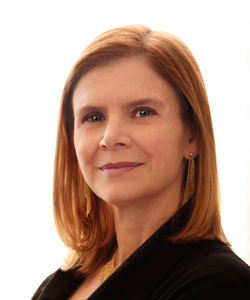 Homer J. Livingston Professor and Chair Department of Astronomy & Astrophysics Kumiko Kotera is a young researcher in Astrophysics, at the Institut d'Astrophysique de Paris, (IAP) of the French Centre National de la Recherche Scientifique (CNRS). She builds theoretical models to probe the most violent phenomena in the Universe, by deciphering their so-called "astroparticle" messengers (cosmic rays, neutrinos and photons). Today, she is one of the leaders of the international project GRAND (Giant Radio Array for Neutrino Detection), that aims at detecting very-high energy cosmic neutrinos. In 2016, she received a prestigious award: the CNRS bronze medal for her important achievements. Lucia Di Ciaccio: Do you have any female 'physicist cult figure' or 'role model'? Kumiko Kotera: Angela Olinto, professor at the University of Chicago, is undoubtedly my mentor. She struggled to build her brilliant career at a time when female physicists were far more isolated than today and opened the path for all of us. She showed me how one can be strong, respected, and do beautiful physics without ever giving up on kindness, family, art, and the rest of the world. Read more >> Related Links: KICP Members: Angela V. Olinto New World-Leading Limit on Dark Matter Search from PICO Experiment SNOLAB News, February 27, 2017 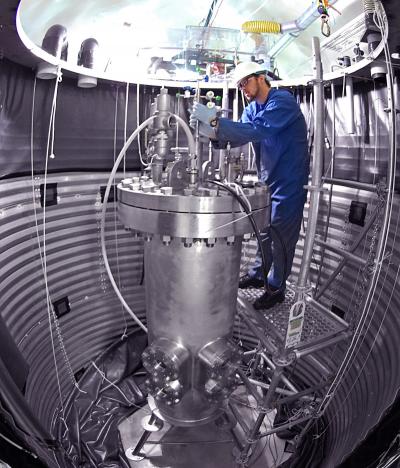 The PICO Collaboration is excited to announce that the PICO-60 dark matter bubble chamber experiment has produced a new dark matter limit after analysis of data from the most recent run. This new result is a factor of 17 improvement in the limit for spin-dependent WIMP-proton cross-section over the already world-leading limits from PICO-2L run-2 and PICO-60 CF3I run-1 in 2016. The PICO-60 experiment is currently the world's largest bubble chamber in operation; it is filled with 52 kg of C3F8 (octafluoropropane) and is taking data in the ladder lab area of SNOLAB. The detector uses the target fluid in a superheated state such that a dark matter particle interaction with a fluorine nucleus causes the fluid to boil and creates a tell tale bubble in the chamber. The PICO experiment uses digital cameras to see the bubbles and acoustic pickups to improve the ability to distinguish between dark matter particles and other sources when analysing the data. The superheated detector technology has been at the forefront of spin-dependent (SD) searches, using various refrigerant targets including CF3I, C4F10 and C2ClF5, and two primary types of detectors: bubble chambers and droplet detectors. PICO is the leading experiment in the direct detection of dark matter for spin-dependent couplings and is developing a much larger version of the experiment with up to 500 kg of active mass. The PICO Collaboration would like to acknowledge the support of the National Sciences and Engineering Research Council of Canada (NSERC) and the Canada Foundation for Innovation (CFI) for funding. This work was also supported by the U.S. Department of Energy Office of Science and the US National Science Foundation under Grants PHY-1242637, PHY-0919526, PHY-1205987 and PHY-1506377, and in part by the Kavli Institute for Cosmological Physics at the University of Chicago through grant PHY-1125897, and an endowment from the Kavli Foundation and its founder Fred Kavli. Read more >> Related Links: KICP Members: Juan I. Collar Scientific projects: COUPP/PICO A recharged debate over the speed of the expansion of the universe could lead to new physics AAAS, March 8, 2017 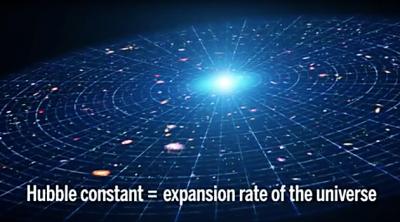 It was the early 1990s, and the Carnegie Observatories in Pasadena, California, had emptied out for the Christmas holiday. Wendy Freedman was toiling alone in the library on an immense and thorny problem: the expansion rate of the universe. Carnegie was hallowed ground for this sort of work. It was here, in 1929, that Edwin Hubble first clocked faraway galaxies flying away from the Milky Way, bobbing in the outward current of expanding space. The speed of that flow came to be called the Hubble constant. Freedman's quiet work was soon interrupted when fellow Carnegie astronomer Allan Sandage stormed in. Sandage, Hubble's designated scientific heir, had spent decades refining the Hubble constant, and had consistently defended a slow rate of expansion. Freedman was the latest challenger to publish a faster rate, and Sandage had seen the heretical study. "He was so angry," recalls Freedman, now at the University of Chicago in Illinois, "that you sort of become aware that you're the only two people in the building. I took a step back, and that was when I realized, oh boy, this was not the friendliest of fields." The acrimony has diminished, but not by much. Sandage died in 2010, and by then most astronomers had converged on a Hubble constant in a narrow range. But in a twist Sandage himself might savor, new techniques suggest that the Hubble constant is 8% lower than a leading number. For nearly a century, astronomers have calculated it by meticulously measuring distances in the nearby universe and moving ever farther out. But lately, astrophysicists have measured the constant from the outside in, based on maps of the cosmic microwave background (CMB), the dappled afterglow of the big bang that is a backdrop to the rest of the visible universe. By making assumptions about how the push and pull of energy and matter in the universe have changed the rate of cosmic expansion since the microwave background was formed, the astrophysicists can take their map and adjust the Hubble constant to the present-day, local universe. The numbers should match. But they don't. It could be that one approach has it wrong. The two sides are searching for flaws in their own methods and each other's alike, and senior figures like Freedman are racing to publish their own measures. "We don't know which way this is going to land," Freedman says. Read more >> Related Links: KICP Members: Wendy L. Freedman; Daniel M. Scolnic NASA to launch telescope on super-pressure balloon in search for cosmic rays UChicago News, April 6, 2017 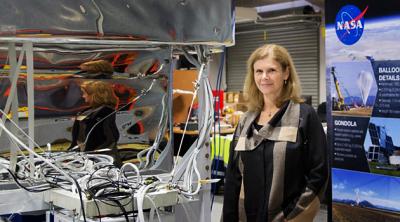 Prof. Angela Olinto leads project to collect data at near-space altitudes The National Aeronautics and Space Administration is preparing to use a super-pressure balloon to launch into near space a pioneering telescope designed to detect ultra-high-energy cosmic rays as they interact with the Earth's atmosphere. "We're searching for the most energetic cosmic particles that we’ve ever observed," said Angela V. Olinto, the Homer J. Livingston Distinguished Service Professor at the University of Chicago and principal investigator of the project, known as the Extreme Universe Space Observatory-Super Pressure Balloon. "The origin of these particles is a great mystery that we'd like to solve. Do they come from massive black holes at the center of galaxies? Tiny, fast-spinning stars? Or somewhere else?" The extremely rare particles hit the atmosphere at a rate of only one per square kilometer per century. To assure that it will capture some of the particles, the telescope's camera takes 400,000 images a second as it casts a wide view back toward the Earth. Preparations are complete in Wanaka, New Zealand for the balloon's launch, which will happen as soon as scientists and engineers have the right weather conditions. Researchers hope the balloon will stay afloat for up to 100 days, thereby setting a record for an ultra-long duration flight. NASA describes the super-pressure balloon as the "most persnickety" of all the flight and launch vehicles it operates. Launching the balloon depends on just the right weather conditions on the surface of the Earth all the way up to 110,000 feet, where the balloon travels. The project will set the stage for a space mission currently being planned. "That would enlarge even more the volume of the atmosphere that we can observe at one time," said Olinto, who serves as chair of UChicago's Department of Astronomy and Astrophysics. "We need to observe a significantly large number of these cosmic messengers to discover what are their sources and how they interact at their energetic extremes." When an ultra-high-energy cosmic ray reaches the Earth's atmosphere, it induces a series of interactions that stimulates a large cosmic ray shower. The new telescope, which detects at night, will capture the ultra-violet fluorescence produced by the interaction of these particle showers with the nitrogen molecules in the air. "High-energy cosmic rays have never been observed this way from space," said Lawrence Wiencke, professor of physics at the Colorado School of Mines and co-leader of the project. "This mission to a sub-orbital altitude is a pioneering opportunity for us. Our international collaboration is very excited about this launch and about the new data that will be collected along the way." The project lends itself to participation by graduate and undergraduate students, Olinto said. Leo Allen and Mikhail Rezazadeh, two UChicago undergraduates, built an infrared camera under the supervision of UChicago Prof. Stephan Meyer and Olinto to observe the cloud coverage at night under EUSO-SPB. Sixteen countries were involved with the design of the telescope. The U.S. team, funded by NASA, is led by UChicago, Colorado School of Mines, Marshall Space Flight Center, University of Alabama at Huntsville and Lehman College at the City University of New York. Read more >> Related Links: KICP Members: Stephan S. Meyer; Angela V. Olinto KICP Students: Leo Allen; Mikhail Rezazadeh Researchers Provide New Insight Into Dark Matter Halos University of Pennsylvania, April 19, 2017 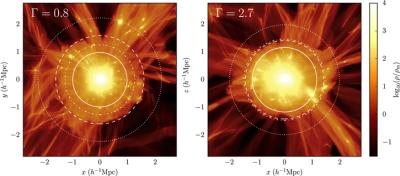 Many scientists now believe that more than 80 percent of the matter of the universe is locked away in mysterious, as yet undetected, particles of dark matter, which affect everything from how objects move within a galaxy to how galaxies and galaxy clusters clump together in the first place. This dark matter extends far beyond the reach of the furthest stars in the galaxy, forming what scientists call a dark matter halo. While stars within the galaxy all rotate in a neat, organized disk, these dark matter particles are like a swarm of bees, moving chaotically in random directions, which keeps them puffed up to balance the inward pull of gravity. Bhuvnesh Jain, a physics professor in Penn's School of Arts & Sciences, and postdoc Eric Baxter are conducting research that could give new insights into the structure of these halos. The researchers wanted to investigate whether these dark matter halos have an edge or boundary. "People have generally imagined a pretty smooth transition from the matter bound to the galaxy to the matter between galaxies, which is also gravitationally attracted to the galaxies and clusters," Jain said. "But theoretically, using computer simulations a few years ago, researchers at the University of Chicago showed that for galaxy clusters a sharp boundary is expected, providing a distinct transition that we should be able to see through a careful analysis of the data." Using a galaxy survey called the Sloan Digital Sky Survey, or SDSS, Baxter and Jain looked at the distribution of galaxies around clusters. They formed a team of experts at the University of Chicago and other institutions around the world to examine thousands of galaxy clusters. Using statistical tools to do a joint analysis of several million galaxies around them, they found a drop at the edge of the cluster. Baxter and collaborator Chihway Chang at the University of Chicago led a paper reporting the findings, accepted for publication in the Astrophysical Journal. Read more >> Related Links: KICP Members: Chihway Chang; Andrey V. Kravtsov; Surhud More KICP Students: Eric J. Baxter; Benedikt Diemer Scientific projects: SDSS Supernova Survey (SDSS SS); Sloan Digital Sky Survey (SDSS) Virtual Earth-sized telescope aims to capture first image of a black hole UChicago News, April 21, 2017 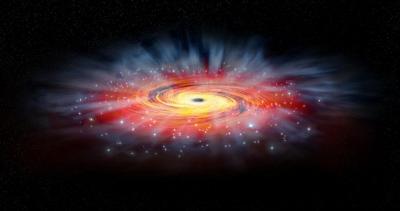 Illustration by NASA/CXC/M.Weiss UChicago-led South Pole Telescope part of international effort to study event horizon A powerful network of telescopes around the Earth is attempting to create the first image of a black hole, an elusive gravitational sinkhole that Albert Einstein first predicted in 1915. The UChicago-led South Pole Telescope is part of the Event Horizon Telescope, which combines eight observatories in six locations to create a virtual Earth-sized telescope so powerful it could spot a nickel on the surface of the moon. Scientists spent ten days in April gathering data on Sagittarius A*, a black hole at the center of the Milky Way, as well as a supermassive black hole about 1,500 times heavier at the center of galaxy M87. Each radio-wave observatory collected so much data that it could not be transmitted electronically. Instead, it was downloaded onto more than 1,000 hard drives and flown to the project's data analysis centers at the MIT Haystack Observatory in Westford, Mass., and the Max Planck Institute for Radio Astronomy in Bonn, Germany. Over the next year, supercomputers will correlate, combine and interpret the data using very long baseline interferometry, a procedure common in astronomy but never implemented on such an enormous scale. The goal is to produce an image of the event horizon, the boundary of a black hole where luminous gases burn at tens of millions of degrees and from which nothing escapes, not even light. "It all came together for us: telescopes with higher resolutions, better experiments, more computer power, bright ideas, good weather conditions and so on," said John Carlstrom, the Subramanyan Chandrasekhar Distinguished Service Professor of Astronomy and Astrophysics at UChicago, who leads the South Pole Telescope collaboration. "I'm very confident that we'll come up with not only a good image, but a better understanding of black holes and gravity." The telescopes in the network employ radio dishes that can detect very short wavelengths, even less than a millimeter -- the shorter the wavelength, the higher the resolution. Water, dust and clouds of gas can block radio waves, so the telescopes in Event Horizon were selected, in part, for being located in deserts, dry plateaus and mountaintops. Nevertheless, a storm or high winds could have ruined data collection. Astronomers have taken aim at black holes before, but the big difference this time comes from incorporating the new Atacama Large Millimeter/submillimeter Array and the South Pole Telescope into the virtual network. Located high in the mountains of Chile, ALMA is the most complex astronomical observatory ever built, using 66 high-precision dish antennas with a total collecting area of more than 71,000 square feet. The South Pole Telescope provides the critical north-south resolving power to pick apart the details of Sagittarius A*. "ALMA is the key to this experiment," Carlstrom said. "It gives us great sensitivity and at the incredibly short wavelength of 1.3 millimeters. But next year we'll repeat this experiment at 0.8 millimeters to get an even higher resolution. "We'll always be pushing the limits," he added. Read more >> Related Links: KICP Members: John E. Carlstrom Scientific projects: South Pole Telescope (SPT) Prof. Angela Olinto hopes telescope will help unravel mysteries of cosmic rays UChicago News, April 25, 2017  UChicago-led NASA balloon mission launches, with goal of breaking flight record NASA on April 24 launched a football-stadium-sized, super-pressure balloon on a mission that aims to set a record for flight duration while carrying a telescope that scientists at the University of Chicago and around the world will use to study cosmic rays. Researchers from 16 nations hope the balloon, which lifted off from an airfield in Wanaka, New Zealand, will stay afloat for up to 100 days as it travels at 110,000 feet around the Southern Hemisphere. From its vantage point in near-space, the telescope is designed to detect ultra-high energy cosmic rays as they penetrate the Earth's atmosphere. An ultraviolet camera on the telescope will take 400,000 images a second as it looks back toward Earth to try and capture some of the particles. "The mission is searching for the most energetic cosmic particles ever observed," said Angela V. Olinto, the Homer J. Livingston Distinguished Service Professor at the University of Chicago and principal investigator of the project, known as the Extreme Universe Space Observatory on a Super Pressure Balloon (EUSO-SPB). "The origin of these particles is a great mystery that we'd like to solve. Do they come from massive black holes at the center of galaxies? Tiny, fast-spinning stars? Or somewhere else?" The next step for Olinto and her fellow scientists is a space mission, now being designed by NASA centers under her leadership, to observe a greater atmospheric area for detecting high-energy cosmic rays and neutrinos. These extremely rare particles hit the atmosphere at a rate of only one per square kilometer per century. As the NASA balloon travels around the Earth in the coming months, it may be visible from the ground, particularly at sunrise and sunset, to those who live in the mid-latitudes of the Southern Hemisphere such as Australia, Argentina and South Africa. The complex balloon launch depended on the right weather conditions on the surface of the Earth all the way up to 110,000 feet, where the balloon travels. The launch window for lift-off opened March 25, and it a full month until the 18.8-million-cubic-foot balloon could take flight. Scientists now hope the balloon, made of a polyethylene film stronger and more durable than the type used in sandwich bags, can break the previous flight record of 46 days, set in 2016. At a relatively low cost, NASA's heavy-lift balloons have become critical launch vehicles for testing new technologies and science instruments to assure success for costlier, higher-risk spaceflight missions, said Debbie Fairbrother, chief of NASA's Balloon Program Office. "For decades, balloons have provided access to the near-space environment to support scientific investigations, technology testing, education and workforce development," Fairbrother said. "We're thrilled to provide this high-altitude flight opportunity for EUSO-SPB as they work to validate their technologies while conducting some really mind-blowing science." Balloons also are part of UChicago's storied history of cosmic ray research, which dates to 1928 when Nobel laureate Robert Millikan first coined the term in a research paper. Pierre Auger, the namesake of the cosmic ray observatory in Argentina, launched hot air balloon experiments in the 1940s from the former site of Stagg Field. UChicago scientists used balloons in the Arctic Circle to discover positrons (the anti-particles of electrons) in the 1960s. The EUSO-SPB project includes two UChicago undergraduates, Leo Allen and Mikhail Rezazadeh, who built an infrared camera under the supervision of Olinto and Stephan Meyer, professor of astronomy and astrophysics, to observe the cloud coverage at night. Sixteen countries were involved with the design of the telescope and construction involved the U.S., France, Italy, Germany, Poland, Mexico and Japan. The U.S. team, funded by NASA, is led by UChicago, with co-investigators at Colorado School of Mines, Marshall Space Flight Center, University of Alabama at Huntsville and Lehman College at the City University of New York. Read more >> Related Links: KICP Members: Stephan S. Meyer; Angela V. Olinto KICP Students: Leo Allen; Mikhail Rezazadeh A Cosmic-Ray Hunter Takes to the Sky Quanta Magazine, April 28, 2017 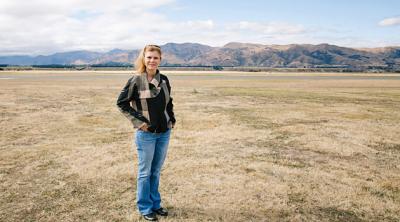 Alpine Images for Quanta Magazine Angela Olinto's new balloon experiment takes her one step closer to the unknown source of the most energetic particles in the universe. In April 25, at 10:50 a.m. local time, a white helium balloon ascended from Wanaka, New Zealand, and lifted Angela Olinto's hopes into the stratosphere. The football stadium-size NASA balloon, now floating 20 miles above the Earth, carries a one-ton detector that Olinto helped design and see off the ground. Every moonless night for the next few months, it will peer out at the dark curve of the Earth, hunting for the fluorescent streaks of mystery particles called ''ultrahigh-energy cosmic rays'' crashing into the sky. The Extreme Universe Space Observatory Super Pressure Balloon (EUSO-SPB) experiment will be the first ever to record the ultraviolet light from these rare events by looking down at the atmosphere instead of up. The wider field of view will allow it to detect the streaks at a faster rate than previous, ground-based experiments, which Olinto hopes will be the key to finally figuring out the particles' origin. Olinto, the leader of the seven-country EUSO-SPB experiment, is a professor of astrophysics at the University of Chicago. She grew up in Brazil and recalls that during her ''beach days in Rio'' she often wondered about nature. Over the 40 years since she was 16, Olinto said, she has remained captivated by the combined power of mathematics and experiments to explain the universe. ''Many people think of physics as hard; I find it so elegant, and so simple compared to literature, which is really amazing, but it's so varied that it's infinite,'' she said. ''We have four forces of nature, and everything can be done mathematically. Nobody's opinions matter, which I like very much!'' Olinto has spent the last 22 years theorizing about ultrahigh-energy cosmic rays. Composed of single protons or heavier atomic nuclei, they pack within quantum proportions as much energy as baseballs or bowling balls, and hurtle through space many millions of times more energetically than particles at the Large Hadron Collider, the world's most powerful accelerator. ''They're so energetic that theorists like me have a hard time coming up with something in nature that could reach those energies,'' Olinto said. ''If we didn't observe these cosmic rays, we wouldn't believe they actually would be produced.'' Olinto and her collaborators have proposed that ultrahigh-energy cosmic rays could be emitted by newly born, rapidly rotating neutron stars, called "pulsars.'' She calls these ''the little guys,'' since their main competitors are ''the big guys'': the supermassive black holes that churn at the centers of active galaxies. But no one knows which theory is right, or if it's something else entirely. Ultrahigh-energy cosmic rays pepper Earth so sparsely and haphazardly - their paths skewed by the galaxy's magnetic field - that they leave few clues about their origin. In recent years, a hazy ''hot spot'' of the particles coming from a region in the Northern sky seems to be showing up in data collected by the Telescope Array in Utah. But this potential clue has only compounded the puzzle: Somehow, the alleged hot spot doesn't spill over at all into the field of view of the much larger and more powerful Pierre Auger Observatory in Argentina. To find out the origin of ultrahigh-energy cosmic rays, Olinto and her colleagues need enough data to produce a map of where in the sky the particles come from - a map that can be compared with the locations of known cosmological objects. ''In the cosmic ray world, the big dream is to point,'' she said during an interview at a January meeting of the American Physical Society in Washington, D.C. She sees the current balloon flight as a necessary next step. If successful, it will serve as a proof of principle for future space-based ultrahigh-energy cosmic-ray experiments, such as her proposed satellite detector, Poemma (Probe of Extreme Multi-Messenger Astrophysics). While in New Zealand in late March preparing for the balloon launch, Olinto received the good news from NASA that Poemma had been selected for further study. Olinto wants answers, and she has an ambitious timeline for getting them. An edited and condensed version of our conversations in Washington and on a phone call to New Zealand follows. QUANTA MAGAZINE: What was your path to astrophysics and ultrahigh-energy cosmic rays? ANGELA OLINTO: I was really interested in the basic workings of nature: Why three families of quarks? What is the unified theory of everything? But I realized how many easier questions we have in astrophysics: that you could actually take a lifetime and go answer them. Graduate school at MIT showed me the way to astrophysics - how it can be an amazing route to many questions, including how the universe looks, how it functions, and even particle physics questions. I didn't plan to study ultrahigh-energy cosmic rays; but every step it was, ''OK, it looks promising.'' QUANTA MAGAZINE: How long have you been trying to answer this particular question? ANGELA OLINTO: In 1995, we had a study group at Fermilab for ultrahigh-energy cosmic rays, because the AGASA (Akeno Giant Air Shower Array) experiment was seeing these amazing events that were so energetic that the particles broke a predicted energy limit known as the ''GZK cutoff.'' I was studying magnetic fields at the time, and so Jim Cronin, who just passed away last year in August - he was a brilliant man, charismatic, full of energy, lovely man - he asked that I explain what we know about cosmic magnetic fields. At that time the answer was not very much, but I gave him what we did know. And because he invited me I got to learn what he was up to. And I thought, wow, this is pretty interesting. QUANTA MAGAZINE: Later you helped plan and run Pierre Auger, an array of detectors spread across 3,000 square kilometers of Argentinian grassland. Did you actually go around and persuade farmers to let you put detectors on their land? ANGELA OLINTO: Not me; it was the Argentinian team who did the amazing job of talking to everybody. The American team helped build a planetarium and a school in that area, so we did interact with them, but not directly on negotiations over land. In Argentina it was like this: You get a big fraction of folks who are very excited and part of it from the beginning. Gradually you got through the big landowners. But eventually we had a couple who were really not interested. So we had two regions in the middle of the array that were empty of the detectors for quite some time, and then we finally closed it. Space is much easier in that sense; it's one instrument and no one owns the atmosphere. On the other hand, the nice thing about having all the farmers involved is that Malargue, the city in Argentina that has had the detectors deployed, has changed completely. The students are much more connected to the world and speak English. Some are coming to the U.S. for undergraduate and even graduate school eventually. It's been a major transformation for a small town where nobody went to college before. So that was pretty amazing. It took a huge outreach effort and a lot of time, but this was very important, because we needed them to let us in. QUANTA MAGAZINE: Why is space the next step? ANGELA OLINTO: To go the next step on the ground - to get 30,000 square kilometers instrumented - is something I tried to do, but it's really difficult. It's hard enough with 3,000; it was crazy to begin with, but we did it. To get to the next order of magnitude seems really difficult. On the other hand, going to space you can see 100 times more volume of air in the same minute. And then we can increase by orders of magnitude the ability to see ultrahigh-energy cosmic rays, see where they are coming from, how they are produced, what objects can reach these kinds of energies. QUANTA MAGAZINE: What will we learn from EUSO-SPB? ANGELA OLINTO: We will not have enough data to revolutionize our understanding at this point, but we will show how it can be done from space. The work we do with the balloon is really in preparation for something like Poemma, our proposed satellite experiment. We plan to have two telescopes free-flying and communicating with each other, and by recording cosmic-ray events with both of the them we should be able to also reproduce the direction and composition very precisely. QUANTA MAGAZINE: Speaking of Poemma, do you still teach a class called Cosmology for Poets? ANGELA OLINTO: We don't call it that anymore, but yes. What it entails is teaching nonscience majors what we know about the history of the universe: what we've learned and why we think it is the way it is, how we measure things and how our scientific understanding of the history of the universe is now pretty interesting. First, we have a story that works brilliantly, and second, we have all kinds of puzzles like dark matter and dark energy that are yet to be understood. So it gives the sense of the huge progress since I started looking at this. It's unbelievable; in my lifetime it's changed completely, and mostly due to amazing detections and observations. One thing I try to do in this course is to mix in some art. I tell them to go to a museum and choose an object or art piece that tells you something about the universe - that connects to what we talked about in class. And here my goal is to just make them dream a bit free from all the boundaries of science. In science there's right and wrong, but in art there are no easy right and wrong answers. I want them to see if they can have a personal attachment to the story I told them. And I think art helps me do that. QUANTA MAGAZINE: You’ve said that when you left Brazil for MIT at 21, you were suffering from a serious muscle disease called polymyositis, which also recurred in 2006. Did those experiences contribute to your drive to push the field forward? ANGELA OLINTO: I think this helps me not get worked up about small stuff. There are always many reasons to give up when working on high-risk research. I see some colleagues who get worked up about things that I'm like, whatever, let's just keep going. And I think that attitude to minimize things that are not that big has to do with being close to death. Being that close, it's like, well, everything is positive. I'm very much a positive person and most of the time say, let's keep pushing. I think having a question that is not answered that is well posed is a very good incentive to keep moving. QUANTA MAGAZINE: Between the ''big guys'' and the ''little guys'' - black holes versus pulsating neutron stars - what's your bet for which ones produce ultrahigh-energy cosmic rays? ANGELA OLINTO: I think it's 50-50 at this point - both can do it and there's no showstopper on either side - but I root always for the underdog. It looks like ultrahigh-energy cosmic rays have a heavier composition, which helps the neutron star case, since we had heavy elements in our neutron star models from the beginning. However, it's possible that supermassive black holes do the job, too, and basically folks just imagine that the bigger the better, so the supermassive black holes are usually a little bit ahead. It could be somewhere in the middle: intermediate-mass black holes. Or ultrahigh-energy cosmic rays could be related to other interesting phenomena, like fast radio bursts, or something that we don't know anything about. QUANTA MAGAZINE: When do you think we'll know for sure? ANGELA OLINTO: You know how when you climb the mountain - I rarely look at where I'm going. I look at the next two steps. I know I'm going to the top but I don't look at the top, because it's difficult to do small steps when the road is really long. So I don't try to predict exactly. But I would imagine - we have a decadal survey process, so that takes quite some time, and then we have another decade - so let's say, in the 2030s we should know the answer. Read more >> Related Links: KICP Members: Angela V. Olinto Scientific projects: Pierre Auger Observatory (AUGER) Gary Steigman, Who Teased Out the Universe's Dark Secrets, Dies at 76 The New York Times, April 28, 2017 by Dennis Overbye, The New York Times Gary Steigman, an astronomer whose pioneering studies of the Big Bang helped show that most of the matter in the universe was not made of atoms - a finding that led to the modern conception of a universe awash in dark matter being pushed into an infinite night by dark energy - died on April 9 in Columbus, Ohio. He was 76. Read more >> Michael Turner has been elected to American Philosophical Society UChicago News, May 4, 2017 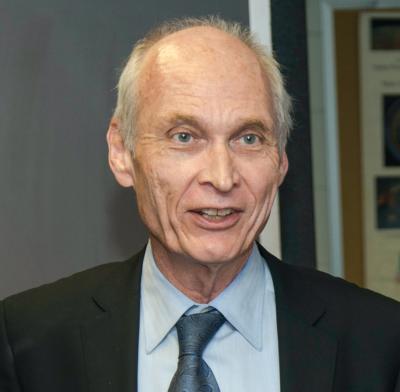 Three UChicago faculty members have been elected to the American Philosophical Society, the oldest learned society in the United States. They are Lorraine Daston, visiting professor in the John U. Nef Committee on Social Thought; Neil H. Shubin, the Robert R. Bensley Distinguished Service Professor of Organismal Biology and Anatomy; and Michael S. Turner, the Bruce V. and Diana M. Rauner Distinguished Service Professor. Michael S. Turner is a theoretical cosmologist who helped to pioneer the interdisciplinary field that combines particle astrophysics and cosmology. His research focuses on the earliest moments of creation, and he has made seminal contributions to theories surrounding dark matter, dark energy and inflation. A former chair of UChicago's Department of Astronomy & Astrophysics, Turner currently serves as director of the Kavli Institute for Cosmological Physics. Turner chaired the National Research Council's Committee on the Physics of the Universe, which published the influential report, "Connecting Quarks with the Cosmos." He previously served as assistant director for mathematical and physical sciences at the National Science Foundation, the chief scientist of Argonne National Laboratory and the president of the American Physical Society. Turner is a member of the National Academy of Sciences and the American Academy of Arts and Sciences. He has received numerous honors, including the 2010 Dannie Heineman Prize for pioneering cosmological physics research from the American Astronomical Society and the American Institute of Physics, and was selected by the University of Chicago to deliver the 2013 Ryerson Lecture. Read more >> Related Links: KICP Members: Michael S. Turner Prof. Angela Olinto participates in Arts Summit 2017 Washington Post, May 8, 2017 by Anne Midgette, Washington Post The Kennedy Center Arts Summit is an annual spring convening designed to bring thought leaders from the arts and related fields together for conversation and connection. The 2017 edition of the Summit examined how arts and culture play a critical role in shaping society, especially through interdisciplinary connections. The program serves as a reflection on current and past efforts as well as the launching pad for new collaborations and initiatives among participants.
Read more >> Related Links: KICP Members: Angela V. Olinto World's most sensitive dark matter detector releases first results UChicago News, May 18, 2017 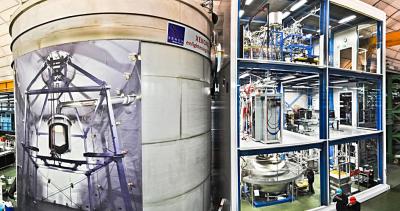 Photo by Roberto Corrieri and Patrick De Perio Scientists behind XENON1T, the largest dark matter experiment of its kind ever built, are encouraged by early results, describing them as the best so far in the search for dark matter. Dark matter is one of the basic constituents of the universe, five times more abundant than ordinary matter. Several astronomical measurements have corroborated the existence of dark matter, leading to an international effort to observe it directly. Scientists are trying to detect dark matter particle interacting with ordinary matter through the use of extremely sensitive detectors. Such interactions are so feeble that they have escaped direct detection to date, forcing scientists to build detectors that are more and more sensitive and have extremely low levels of radioactivity. On May 18, the XENON Collaboration released results from a first, 30-day run of XENON1T, showing the detector has a record low radioactivity level, many orders of magnitude below surrounding material on earth. "The care that we put into every single detail of the new detector is finally paying back," said Luca Grandi, assistant professor in physics at the University of Chicago and member of the XENON Collaboration. "We have excellent discovery potential in the years to come because of the huge dimension of XENON1T and its incredibly low background. These early results already are allowing us to explore regions never explored before." The XENON Collaboration consists of 135 researchers from the United States, Germany, Italy, Switzerland, Portugal, France, the Netherlands, Israel, Sweden and the United Arab Emirates, who hope to one day confirm dark matter's existence and shed light on its mysterious properties. Located deep below a mountain in central Italy, XENON1T features a 3.2-ton xenon dual-phase time projection chamber. This central detector sits fully submersed in the middle of the water tank, in order to shield it from natural radioactivity in the cavern. A cryostat helps keep the xenon at a temperature of minus-95 degrees Celsius without freezing the surrounding water. The mountain above the laboratory further shields the detector, preventing it from being perturbed by cosmic rays. But shielding from the outer world is not enough, since all materials on Earth contain tiny traces of natural radioactivity. Thus extreme care was taken to find, select and process the materials making up the detector to achieve the lowest possible radioactive content. This allowed XENON1T to achieve record "silence" necessary to detect the very weak output of dark matter. A particle interaction in the one-ton central core of the time projection chamber leads to tiny flashes of light. Scientists record and study these flashes to infer the position and the energy of the interacting particle -- and whether it might be dark matter. Despite the brief 30-day science run, the sensitivity of XENON1T has already overcome that of any other experiment in the field probing unexplored dark matter territory. "For the moment we do not see anything unexpected, so we set new constraints on dark matter properties," Grandi said. "But XENON1T just started its exciting journey and since the end of the 30-day science run, we have been steadily accumulating new data." UChicago central to international collaboration Grandi's group is very active within XENON1T, and it is contributing to several aspects of the program. After its initial involvement in the preparation, assembly and early operations of the liquid xenon chamber, the group shifted its focus in the last several months to the development of the computing infrastructure and to data analysis. "Despite its low background, XENON1T is producing a large amount of data that needs to be continuously processed," said Evan Shockley, a graduate student working with Grandi. "The raw data from the detector are directly transferred from Gran Sasso Laboratory to the University of Chicago, serving as the unique distribution point for the entire collaboration." The framework, developed in collaboration with a group led by Robert Gardner, senior fellow at the Computation Institute, allows for the processing of data, both on local and remote resources belonging to the Open Science Grid. The involvement of UChicago's Research Computing Center including Director Birali Runesha allows members of the collaboration all around the world to access processed data for high-level analyses. Grandi's group also has been heavily involved in the analysis that led to this first result. Christopher Tunnell, a fellow at the Kavli Institute for Cosmological Physics, is one of the two XENON1T analysis coordinators and corresponding author of the result. Recently, UChicago hosted about 25 researchers for a month to perform the analyses that led to the first results. "It has been a large, concentrated effort and seeing XENON1T back on the front line makes me forget the never-ending days spent next to my colleagues to look at plots and distributions," Tunnell said. "There is no better thrill than leading the way in our knowledge of dark matter for the coming years." Read more >> Related Links: KICP Members: Luca Grandi; Christopher Tunnell KICP Students: Katrina Miller; Evan Shockley; Nickolas Upole Scientific projects: XENON1T Chicago Ideas Week: "Space Exploration: What's After The Final Frontier?" chicagoideas.com, May 23, 2017  Reach for the stars with some of the country's leading astronomers. Human beings have wondered about the universe for centuries, but it is only within the last 70 years that we've begun venturing into space. Should we continue that effort? How are experts working towards the next era of space exploration? From NASA to private enterprises to citizen scientists, find out humanity's next frontier of space exploration. What Does the Universe Actually Look Like? Humans can only see a small spectrum of wavelengths, but the universe contains much more than we can actually see. Angela Olinto, chair of the department of astronomy at the University of Chicago, is working to bridge that gap. Angela Olinto Homer J. Livingston Distinguished Service Professor; Department of Astronomy and Astrophysics, University of Chicago Angela Olinto is the Homer J. Livingston Distinguished Service Professor and chair of the department of astronomy and astrophysics at the University of Chicago. Olinto received her B.S. from PUC, Rio de Janeiro, and her Ph.D. from MIT. She has made significant contributions to a number of topics in astrophysics and is the PI of the EUSO-SPB mission (Extreme Universe Space Observatory on a Super-Pressure Balloon) and a member of the Pierre Auger Observatory, both designed to discover the origin of the highest energy cosmic rays. Astrophysics and Unlocking the Universe When it comes to scientific discover on how the universe works, what we know is just as important as what we thought we knew. Rocky Kolb and Hakeem Oluseyi sit down to discuss the most compelling research in quantum physics going on today. Rocky Kolb Dean of Physical Sciences, University of Chicago Edward W. Kolb (known to most as Rocky) is the Arthur Holly Compton Distinguished Service Professor of Astronomy & Astrophysics and the Dean of the Physical Sciences at the University of Chicago, as well as a member of the Enrico Fermi Institute and the Kavli Institute for Cosmological Physics. In 1983, he was a founding head of the Theoretical Astrophysics Group and in 2004 the founding Director of the Particle Astrophysics Center at Fermi National Accelerator Laboratory in Batavia, Illinois. Kolb is a Fellow of the American Academy of Arts and Sciences and a Fellow of the American Physical Society. He was the recipient of the 2003 Oersted Medal of the American Association of Physics Teachers for notable contributions to the teaching of physics, the 1993 Quantrell Prize for teaching excellence at the University of Chicago and the 2009 Excellence in Teaching Award from the Graham School of the University of Chicago. His book for the general public, "Blind Watchers of the Sky," received the 1996 Emme Award of the American Aeronautical Society. The field of Rocky's research is the application of elementary-particle physics to the very early Universe. In addition to over 200 scientific papers, he is a co-author of "The Early Universe," the standard textbook on particle physics and cosmology. Related Links: KICP Members: Edward W. Kolb; Angela V. Olinto Scientific projects: Pierre Auger Observatory (AUGER) LIGO detects colliding black holes for third time UChicago News, June 1, 2017 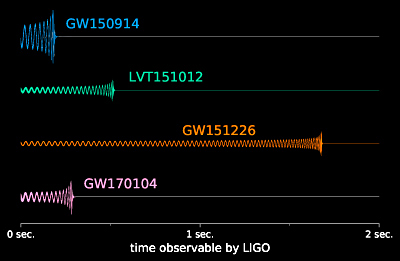 Courtesy of LSC/University of Chicago/Ben Farr UChicago scientists: Results help unveil diversity of black holes in the universe The Laser Interferometer Gravitational-Wave Observatory has made a third detection of gravitational waves, providing the latest confirmation that a new window in astronomy has opened. As was the case with the first two detections, the waves -- ripples in spacetime -- were generated when two black holes collided to form a larger black hole. The latest findings by the LIGO observatory, described in a new paper accepted for publication in Physical Review Letters, builds upon the landmark discovery in 2015 of gravitational waves, which Albert Einstein predicted a century earlier in his theory of general relativity. "The UChicago LIGO group has played an important role in this latest discovery, including helping to discern what emitted the gravitational waves, testing whether Einstein's theory of general relativity was correct, and exploring whether electromagnetic radiation -- such as visible light, radio, or X-rays -- were also emanated by the black hole collision," said Daniel Holz, associate professor in Physics and Astronomy & Astrophysics, and head of UChicago's LIGO group. The new detection occurred during LIGO's current observing run, which began Nov. 30, 2016, and will continue through the summer. The newfound black hole formed by the merger has a mass about 49 times that of our sun. The discovery fills in a gap between the systems previously detected by LIGO, with masses of 62 and 21 times that of our sun for the first and second detections, respectively. "We continue to learn more about this population of heavy stellar-mass black holes, with masses over 20 solar masses, that LIGO has discovered," said LIGO collaborator Ben Farr, a McCormick Fellow at UChicago's Enrico Fermi Institute. "LIGO is making the most direct and pristine observations of black holes that have ever been made, and we're taking large strides in our understanding of how and where these black holes are formed." LIGO made the first direct observation of gravitational waves in September 2015 during its first observing run. The second detection was made in December 2015, and the third detection, called GW170104, was made on Jan. 4, 2017. In all three cases, each of the twin detectors of LIGO observed gravitational waves from the tremendously energetic mergers of black hole pairs. The collisions produce more power than is radiated by all of the stars in all of the galaxies in the entire observable universe. The recent detection is the farthest one yet, with the black holes located about 3 billion light-years away. The black holes in the first and second detections were located 1.3 billion and 1.4 billion light-years away, respectively. "It is truly remarkable that, 100 years after the formulation of general relativity, we are now directly observing some of the most interesting predictions of this theory," said LIGO collaborator Robert Wald, the Charles H. Swift Distinguished Service Professor in Physics at UChicago. "LIGO has opened an entirely new window on our ability to observe phenomena involving strong gravitational fields, and we can look forward to its providing us with many further observations of great astrophysical and cosmological significance in the coming years." 'Looks like Einstein was right' The LIGO Scientific Collaboration is an international collaboration whose observations are carried out by twin detectors -- one in Hanford, Wash., and the other in Livingston, La. -- operated by California Institute of Technology and Massachusetts Institute of Technology with funding from the National Science Foundation. The discoveries from LIGO are once again putting Albert Einstein's theories to the test. For example, the researchers looked for an effect called dispersion, in which light waves in a physical medium travel at different speeds depending on their wavelength -- the same way a prism creates a rainbow. Einstein's general theory of relativity forbids dispersion from happening in gravitational waves as they propagate from their source to Earth, and LIGO's latest detection is consistent with this prediction. "It looks like Einstein was right -- even for this new event, which is about two times farther away than our first detection," said Laura Cadonati, associate professor of physics at Georgia Institute of Technology and deputy spokesperson for the LIGO Scientific Collaboration. "We can see no deviation from the predictions of general relativity, and this greater distance helps us to make that statement with more confidence." The LIGO team working with the Virgo Collaboration is continuing to search the latest LIGO data for signs of space-time ripples from the far reaches of the cosmos. They also are working on technical upgrades for LIGO's next run, scheduled to begin in late 2018, during which the detectors' sensitivity will be improved. "With the detection of GW170104, we are taking another important step toward gravitational-wave astronomy," Holz said. "We now have three solid detections, and these provide our first hints about the diversity of black hole systems in the universe." LIGO is funded by the National Science Foundation. More than 1,000 scientists from around the world participate in the effort through the LIGO Scientific Collaboration and Virgo Collaboration. Read more >> Related Links: KICP Members: Ben Farr; Daniel E. Holz; Robert M. Wald Scientific projects: Laser Interferometer Gravitational-wave Observatory (LIGO) Third Gravitational Wave Detection, From Black-Hole Merger 3 Billion Light Years Away The New York Times, June 8, 2017 by Dennis Overbye, The New York Times This is the third black-hole smashup that astronomers have detected since they started keeping watch on the cosmos back in September 2015, with LIGO, the Laser Interferometer Gravitational-Wave Observatory. All of them are more massive than the black holes that astronomers had previously identified as the remnants of dead stars. ... As for the original stellar identities of these dark dancers, the consensus, said Daniel Holz of the University of Chicago, is that they were probably very massive and primitive stars at least 40 times heavier than the sun. According to theoretical calculations, stars composed of primordial hydrogen and helium and lacking heavier elements like oxygen and carbon, which astronomers with their knack for nomenclature call "metals," can grow monstrously large. They could collapse directly into black holes when their brief violent lives were over without the benefit of a supernova explosion or other cosmic fireworks. Dr. Holz said in an email: "It is indeed odd to think that some of the most dramatic stellar collapse do not result in massive stellar explosions outshining galaxies, but instead just involve a star winking out of existence. But that's what the theory says should happen." Read more >> Related Links: KICP Members: Daniel E. Holz Scientific projects: Laser Interferometer Gravitational-wave Observatory (LIGO) Hubble pushed beyond limits to spot clumps of new stars in distant galaxy UChicago News, July 10, 2017 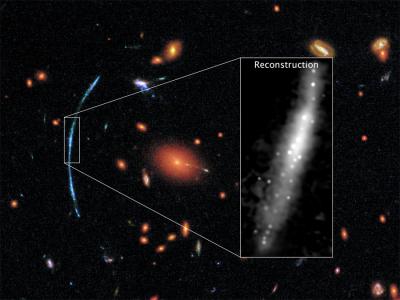 Image credit: NASA, ESA, and T. Johnson (University of Michigan) When it comes to the distant universe, even the keen vision of NASA's Hubble Space Telescope can only go so far. Teasing out finer details requires clever thinking and a little help from a cosmic alignment with a gravitational lens. By applying a new computational analysis to a galaxy magnified by a gravitational lens, astronomers have obtained images ten times sharper than what Hubble could achieve on its own. The results show an edge-on disk galaxy studded with brilliant patches of newly formed stars. "When we saw the reconstructed image we said, 'Wow, it looks like fireworks are going off everywhere,'" said astronomer Jane Rigby of NASA's Goddard Space Flight Center in Greenbelt, Md. The galaxy in question is so far away that we see it as it appeared 11 billion years ago, only 2.7 billion years after the big bang. It is one of more than 70 strongly lensed galaxies studied by the Hubble Space Telescope, following up targets selected by the Sloan Giant Arcs Survey, which discovered hundreds of strongly lensed galaxies by searching Sloan Digital Sky Survey imaging data covering one-fourth of the sky. "Mining the Sloan Digital Sky Survey has given us the opportunity to peer inside a distant star-forming galaxy with a sharpness of vision never before allowed," said Michael Gladders, associate professor in Astronomy and Astrophysics at the University of Chicago. "Admittedly, it's a highly distorted view -- like looking at your reflection in the famous Chicago 'Bean' -- but with some work we can and have reconstructed a detailed image of the distant galaxy." Galaxy cluster The galaxy cluster shown here was discovered as part of the Sloan Giant Arcs Survey. It is located about 6 billion light-years from Earth and contains hundreds of galaxies Researchers had been grappling with the gravity of a giant cluster of galaxies between the target galaxy and Earth that distorts the more distant galaxy's light, stretching it into an arc and also magnifying it almost 30 times. The team had to develop special computer code to remove the distortions caused by the gravitational lens, and reveal the distant galaxy as it would normally appear. The resulting reconstructed image revealed two dozen clumps of newborn stars, each spanning about 200 to 300 light-years. This contradicted theories suggesting that star-forming regions in the distant, early universe were much larger: 3,000 light-years or more in size. "There are star-forming knots as far down in size as we can see," said doctoral student Traci Johnson of the University of Michigan, lead author of two of the three papers describing the research. Without the magnification boost of the gravitational lens, Johnson added, the disk galaxy would appear perfectly smooth and unremarkable to Hubble. This would give astronomers a very different picture of where stars are forming. While Hubble highlighted new stars within the lensed galaxy, NASA's James Webb Space Telescope will uncover older, redder stars that formed even earlier in the galaxy's history. It will also peer through any obscuring dust within the galaxy. "With the Webb Telescope, we'll be able to tell you what happened in this galaxy in the past, and what we missed with Hubble because of dust," said Rigby. These findings appear in a paper published in The Astrophysical Journal Letters and two additional papers published in The Astrophysical Journal. The Hubble Space Telescope, which is named after UChicago alumnus Edwin Hubble, is a project of international cooperation between NASA and the European Space Agency. NASA's Goddard Space Flight Center manages the telescope. The Space Telescope Science Institute in Baltimore, Md., conducts Hubble science operations. The institute is operated for NASA by the Association of Universities for Research in Astronomy in Washington, D.C. Read more >> Related Links: KICP Members: Michael D. Gladders Scientific projects: Sloan Digital Sky Survey (SDSS) Angela Olinto has been named the Albert A. Michelson Distinguished Service Professor UChicago News, July 12, 2017  Angela V. Olinto has been named the Albert A. Michelson Distinguished Service Professor in Astronomy and Astrophysics and the College. Olinto works on astroparticle physics and cosmology. She has made important contributions to the physics of quark stars, inflationary theory, cosmic magnetic fields and astroparticle physics. She currently leads NASA sub-orbital and space missions to discover the origins of the highest-energy cosmic rays and neutrinos. Olinto is an elected fellow of the American Association for the Advancement of Science and the American Physical Society, and has received the Chaire d'Excellence Award of the French Agence Nationale de Recherche, the Quantrell Award for Excellence in Undergraduate Teaching, and the Faculty Award for Excellence in Graduate Teaching and Mentoring, among other awards. She serves as chair of the Department of Astronomy and Astrophysics at the University. Read more >> Related Links: KICP Members: Angela V. Olinto KICP graduate students Carlos Blanco and Maya Fishbach awarded the NSF Graduate Research Fellowship UChicago News, July 17, 2017 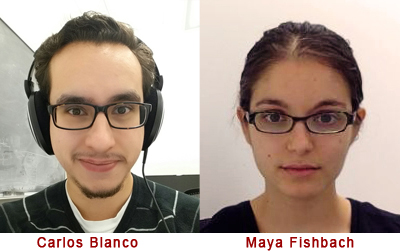 Carlos Blanco, a PhD candidate in astro-particle physics, studies possible particle dark matter models and looks at gamma rays to determine if they are coming from dark matter. "Right now, our understanding of the universe is extremely small," explains Blanco. "Twenty-seven percent of the energy content of the universe is dark matter, and we don't understand the nature of dark matter at all." Blanco is also working on a Raspberry Pi-based educational platform that aims to teach children in Colombia the principles of coding and engineering and how to build water quality sensors. Maya Fishbach, a PhD candidate in astronomy and astrophysics, studies where and how black holes form. As a member of LIGO, the Laser Interferometer Gravitational-Wave Observatory, Fishbach utilizes detections of merging black hole binaries, which emit fairly "loud" gravitational waves in the last few seconds of their evolution. "Black holes are not intuitively understood, which makes them very exciting to study," says Fishbach. "When black holes collide, they emit a lot of energy in the form of gravitational waves, and these waves carry information about their properties." Fishbach recently published a paper in Astrophysical Journal Letters. The award offers recognition and financial support for outstanding graduate students in science, technology and engineering fields supported by the NSF. Read more >> Related Links: KICP Members: Daniel E. Holz; Daniel Hooper KICP Students: Carlos Blanco; Maya Fishbach Tiny scientists mobilized to study solar eclipse Chicago Suntimes, July 26, 2017 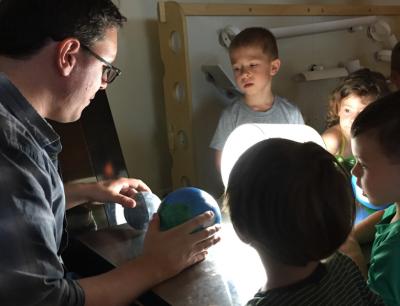 Jason Henning is a post-doctorate fellow at the Kavli Institute for Cosmological Physics at the University of Chicago. He's been to the South Pole three times, working on the university's 10-meter telescope there. On Tuesday morning, he found himself advancing science in a place it doesn't frequently go: sitting on a too small chair in a basement classroom with the lights dimmed. "Who's ready for an eclipse?" he asked a group of 4- and 5-year-olds sitting around a table at Bright Horizons at Lakeview, a preschool. The youngsters didn't exactly squeal "Yes!" in unison, but they at least cast their attention in his general direction. Henning proceeded, using a small model Earth, moon and, as a light source, a lamp with a dinosaur base. "Does anybody know how you make night and day?" asked Henning. "Does anybody remember?" Read more >> Related Links: KICP Members: Jason Henning KICP Students: Joshua Sobrin Scientific projects: South Pole Telescope (SPT) Dark Energy Survey reveals most precise measure of universe's structure UChicago News, August 3, 2017 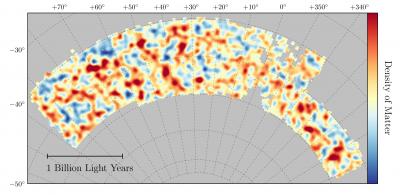 Courtesy of Chihway Chang, the DES collaboration Result supports view that dark matter, dark energy make up most of cosmos Imagine planting a single seed and, with great precision, being able to predict the exact height of the tree that grows from it. Now imagine traveling to the future and snapping photographic proof that you were right. If you think of the seed as the early universe, and the tree as the universe the way it looks now, you have an idea of what the international Dark Energy Survey collaboration has just done. Scientists unveiled their most accurate measurement of the present large-scale structure of the universe at a meeting Aug. 3 at the University of Chicago-affiliated Fermi National Accelerator Laboratory. UChicago, Argonne and Fermilab scientists are members of international Dark Energy Survey collaboration. These measurements of the amount and "clumpiness" (or distribution) of dark matter in the present-day cosmos were made with a precision that, for the first time, rivals that of inferences from the early universe by the European Space Agency's orbiting Planck observatory. The new Dark Energy Survey result (the tree, in the above metaphor) is close to "forecasts" made from the Planck measurements of the distant past (the seed), allowing scientists to understand more about the ways the universe has evolved over 14 billion years. "This result is beyond exciting," said Fermilab's Scott Dodelson, a professor in the Department of Astronomy and Astrophysics at UChicago and one of the lead scientists on this result, which was announced at the American Physical Society Division of Particles and Fields meeting. "For the first time, we're able to see the current structure of the universe with the same clarity that we can see its infancy, and we can follow the threads from one to the other, confirming many predictions along the way." Most notably, this result supports the theory that 26 percent of the universe is in the form of mysterious dark matter and that space is filled with an also-unseen dark energy, which makes up 70 percent and is causing the accelerating expansion of the universe. Paradoxically, it is easier to measure the large-scale clumpiness of the universe in the distant past than it is to measure it today. In the first 400,000 years following the Big Bang, the universe was filled with a glowing gas, the light from which survives to this day. The Planck observatory's map of this cosmic microwave background radiation gives us a snapshot of the universe at that very early time. Since then, the gravity of dark matter has pulled mass together and made the universe clumpier over time. But dark energy has been fighting back, pushing matter apart. Using the Planck map as a start, cosmologists can calculate precisely how this battle plays out over 14 billion years. "These first major cosmology results are a tribute to the many people who have worked on the project since it began 14 years ago," said Dark Energy Survey Director Josh Frieman, a scientist at Fermilab and a professor in the Department of Astronomy and Astrophysics at UChicago. "It was an exciting moment when we unveiled the results to ourselves just last month, after carrying out a 'blind' analysis to avoid being influenced by our prejudices." The Dark Energy Survey is a collaboration of more than 400 scientists from 26 institutions in seven countries. Its primary instrument is the 570-megapixel Dark Energy Camera, one of the most powerful in existence, which is able to capture digital images of light from galaxies eight billion light years from Earth. The camera was built and tested at Fermilab, the lead laboratory on the Dark Energy Survey, and is mounted on the National Science Foundation's four-meter Blanco telescope, part of the Cerro Tololo Inter-American Observatory in Chile. The DES data are processed at the National Center for Supercomputing Applications at the University of Illinois at Urbana-Champaign. Scientists are using the camera to map an eighth of the sky in unprecedented detail over five years. The fifth year of observation will begin this month. The new results draw only from data collected during the survey's first year, which covers one-thirtieth of the sky. Scientists used two methods to measure dark matter. First, they created maps of galaxy positions as tracers, and second, they precisely measured the shapes of 26 million galaxies to directly map the patterns of dark matter over billions of light years, using a technique called gravitational lensing. To make these ultra-precise measurements, the team developed new ways to detect the tiny lensing distortions of galaxy images - an effect not even visible to the eye, enabling revolutionary advances in understanding these cosmic signals. In the process, they created the largest guide to spotting dark matter in the cosmos ever drawn. The new dark matter map is ten times the size of the one that the Dark Energy Survey released in 2015 and will eventually be three times larger than it is now. "The Dark Energy Survey has already delivered some remarkable discoveries and measurements, and they have barely scratched the surface of their data," said Fermilab Director Nigel Lockyer. "Today's world-leading results point forward to the great strides DES will make toward understanding dark energy in the coming years." Read more >> Related Links: KICP Members: Chihway Chang; Scott Dodelson; Joshua A. Frieman Scientific projects: Dark Energy Survey (DES) Dark Energy Survey reveals most accurate measurement of dark matter structure in the universe Fermilab News, August 3, 2017 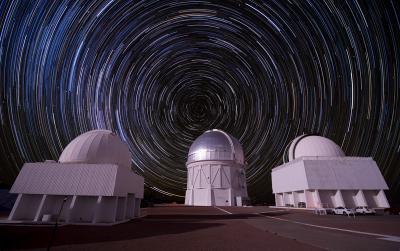 Photo: Reidar Hahn/Fermilab Imagine planting a single seed and, with great precision, being able to predict the exact height of the tree that grows from it. Now imagine traveling to the future and snapping photographic proof that you were right. If you think of the seed as the early universe, and the tree as the universe the way it looks now, you have an idea of what the Dark Energy Survey (DES) collaboration has just done. In a presentation today at the American Physical Society Division of Particles and Fields meeting at the U.S. Department of Energy's (DOE) Fermi National Accelerator Laboratory, DES scientists will unveil the most accurate measurement ever made of the present large-scale structure of the universe. Read more >> Related Links: KICP Members: Scott Dodelson; Joshua A. Frieman Scientific projects: Dark Energy Survey (DES) World's smallest neutrino detector observes elusive interactions of particles UChicago News, August 4, 2017  UChicago physicists play leading role in confirming theory predicted four decades ago In 1974, a Fermilab physicist predicted a new way for ghostly particles called neutrinos to interact with matter. More than four decades later, a UChicago-led team of physicists built the world's smallest neutrino detector to observe the elusive interaction for the first time. Neutrinos are a challenge to study because their interactions with matter are so rare. Particularly elusive has been what's known as coherent elastic neutrino-nucleus scattering, which occurs when a neutrino bumps off the nucleus of an atom. The international COHERENT Collaboration, which includes physicists at UChicago, detected the scattering process by using a detector that's small and lightweight enough for a researcher to carry. Their findings, which confirm the theory of Fermilab's Daniel Freedman, were reported Aug. 3 in the journal Science. "Why did it take 43 years to observe this interaction?" asked co-author Juan Collar, UChicago professor in physics. "What takes place is very subtle." Freedman did not see much of a chance for experimental confirmation, writing at the time: "Our suggestion may be an act of hubris, because the inevitable constraints of interaction rate, resolution and background pose grave experimental difficulties." When a neutrino bumps into the nucleus of an atom, it creates a tiny, barely measurable recoil. Making a detector out of heavy elements such as iodine, cesium or xenon dramatically increases the probability for this new mode of neutrino interaction, compared to other processes. But there's a trade-off, since the tiny nuclear recoils that result become more difficult to detect as the nucleus grows heavier. "Imagine your neutrinos are ping-pong balls striking a bowling ball. They are going to impart only a tiny extra momentum to this bowling ball," Collar said. To detect that bit of tiny recoil, Collar and colleagues figured out that a cesium iodide crystal doped with sodium was the perfect material. The discovery led the scientists to jettison the heavy, gigantic detectors common in neutrino research for one similar in size to a toaster. No gigantic lab The 4-inch-by-13-inch detector used to produce the Science results weighs only 32 pounds (14.5 kilograms). In comparison, the world's most famous neutrino observatories are equipped with thousands of tons of detector material. "You don't have to build a gigantic laboratory around it," said UChicago doctoral student Bjorn Scholz, whose thesis will contain the result reported in the Science paper. "We can now think about building other small detectors that can then be used, for example to monitor the neutrino flux in nuclear power plants. You just put a nice little detector on the outside, and you can measure it in situ." Neutrino physicists, meanwhile, are interested in using the technology to better understand the properties of the mysterious particle. "Neutrinos are one of the most mysterious particles," Collar said. "We ignore many things about them. We know they have mass, but we don't know exactly how much." Through measuring coherent elastic neutrino-nucleus scattering, physicists hope to answer such questions. The COHERENT Collaboration's Science paper, for example, imposes limits on new types of neutrino-quark interactions that have been proposed. The results also have implications in the search for Weakly Interacting Massive Particles. WIMPs are candidate particles for dark matter, which is invisible material of unknown composition that accounts for 85 percent of the mass of the universe. "What we have observed with neutrinos is the same process expected to be at play in all the WIMP detectors we have been building," Collar said. Neutrino alley The COHERENT Collaboration, which involves 90 scientists at 18 institutions, has been conducting its search for coherent neutrino scattering at the Spallation Neutron Source at Oak Ridge National Laboratory in Tennessee. The researchers installed their detectors in a basement corridor that became known as "neutrino alley." This corridor is heavily shielded by iron and concrete from the highly radioactive neutron beam target area, only 20 meters (less than 25 yards) away. This neutrino alley solved a major problem for neutrino detection: It screens out almost all neutrons generated by the Spallation Neutron Source, but neutrinos can still reach the detectors. This allows researchers to more clearly see neutrino interactions in their data. Elsewhere they would be easily drowned out by the more prominent neutron detections. The Spallation Neutron Source generates the most intense pulsed neutron beams in the world for scientific research and industrial development. In the process of generating neutrons, the SNS also produces neutrinos, though in smaller quantities. "You could use a more sophisticated type of neutrino detector, but not the right kind of neutrino source, and you wouldn't see this process," Collar said. "It was the marriage of ideal source and ideal detector that made the experiment work." Two of Collar's former graduate students are co-authors of the Science paper: Phillip Barbeau, AB'01, SB'01, PhD'09, now an assistant professor of physics at Duke University; and Nicole Fields, PhD'15, now a health physicist with the U.S. Nuclear Regulatory Commission in Chicago. The development of a compact neutrino detector brings to fruition an idea that UChicago alumnus Leo Stodolsky, SM'58, PhD'64, proposed in 1984. Stodolsky and Andrzej Drukier, both of the Max Planck Institute for Physics and Astrophysics in Germany, noted that a coherent detector would be relatively small and compact, unlike the more common neutrino detectors containing thousands of gallons of water or liquid scintillator. In their work, they predicted the arrival of future neutrino technologies made possible by the miniaturization of the detectors. Scholz, the UChicago graduate student, saluted the scientists who have worked for decades to create the technology that culminated in the detection of coherent neutrino scattering. "I cannot fathom how they must feel now that it's finally been detected, and they've achieved one of their life goals," Scholz said. "I've come in at the end of the race. We definitely have to give credit to all the tremendous work that people have done before us." Read more >> Related Links: KICP Members: Juan I. Collar KICP Students: Bjorn Scholz Scientific projects: Coherent Germanium Neutrino Technology (CoGeNT) Ever-Elusive Neutrinos Spotted Bouncing Off Nuclei for the First Time Scientific American, August 4, 2017 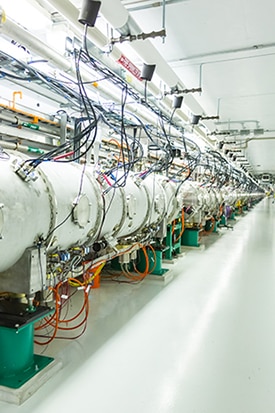 Credit: Jean Lachat University of Chicago. A new technology for detecting neutrinos represents a "monumental" advance for science. Juan Collar, a professor in physics at the University of Chicago, with a prototype of the world's smallest neutrino detector used to observe for the first time an elusive interaction known as coherent elastic neutrino nucleus scattering. Neutrinos are famously antisocial. Of all the characters in the particle physics cast, they are the most reluctant to interact with other particles. Among the hundred trillion neutrinos that pass through you every second, only about one per week actually grazes a particle in your body. That rarity has made life miserable for physicists, who resort to building huge underground detector tanks for a chance at catching the odd neutrino. But in a study published today in Science, researchers working at Oak Ridge National Laboratory (ORNL) detected never-before-seen neutrino interactions using a detector the size of a fire extinguisher. Their feat paves the way for new supernova research, dark matter searches and even nuclear nonproliferation monitoring. Under previous approaches, a neutrino reveals itself by stumbling across a proton or neutron amidst the vast emptiness surrounding atomic nuclei, producing a flash of light or a single-atom chemical change. But neutrinos deign to communicate with other particles only via the "weak" force -- the fundamental force that causes radioactive materials to decay. Because the weak force operates only at subatomic distances, the odds of a tiny neutrino bouncing off of an individual neutron or proton are miniscule. Physicists must compensate by offering thousands of tons of atoms for passing neutrinos to strike. The new experimental collaboration, known as COHERENT, instead looks for a phenomenon called CEvNS (pronounced "sevens"), or coherent elastic neutrino-nucleus scattering. CEvNS relies on the quantum mechanical equivalence between particles and waves, comparable to ocean waves. The high-energy neutrinos sought by most experiments are like short, choppy ocean waves. When such narrow waves pass under floating debris, they can pick out one leaf or twig at a time to toss around. Similarly, a high-energy neutrino typically picks out individual protons and neutrons with which to interact. But just as a long, slow wave would pick up the whole patch of debris at once, a low-energy neutrino sees the entire atomic nucleus as one "coherent" whole. This dramatically improves the odds of an interaction. As the number of neutrons in the nucleus is increased, the effective target size for the neutrino to hit grows in lockstep not just with that number, but with its square. Read more >> Related Links: KICP Members: Juan I. Collar Scientific projects: Coherent Germanium Neutrino Technology (CoGeNT) New sky survey shows that dark energy may one day tear us apart New Scientist, August 7, 2017 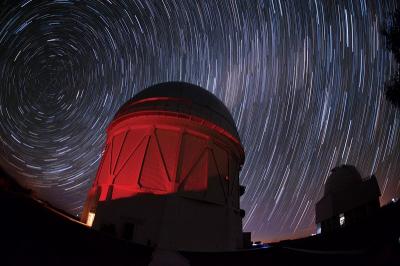 Image credit: Reidar Hahn, Fermilab The fate of the universe just became a little less certain. That's due to a disagreement between a map of the early universe and a new map of today's universe. If the mismatch stands the test of future measurements, we might have to rewrite physics. But that is a pretty big if. The new results, which are part of the ongoing Dark Energy Survey (DES), charted the distribution of matter across 26 million galaxies in a large swathe of the southern sky. "This is one of the most powerful pictures of the universe today that we've ever had," says Daniel Scolnic at the University of Chicago, who is a part of the 400-person DES collaboration but wasn't involved in this work. It is so powerful because knowing the distribution, or clumpiness, of galaxies helps us better understand the cosmic game of tug of war as dark energy - a mysterious force that causes the universe to accelerate - pulls each galaxy apart, and dark matter - a theoretical but still unseen form of matter - pushes each galaxy together. Read more >> Related Links: KICP Members: Daniel M. Scolnic Scientific projects: Dark Energy Survey (DES) Eclipse reflects sun's historic power UChicago News, August 16, 2017  Eclipses have fascinated people since the earliest days of recorded history. These rare astronomical events have helped explain the world around us -- from ancient Mesopotamia, where they were believed to foretell the deaths of kings, all the way to the 20th century, when they helped prove Einstein's theory of general relativity. Such interest hasn't dimmed. People across the United States will have an opportunity on Aug. 21 to witness the first total solar eclipse from coast to coast in 99 years. UChicago faculty and students are among the hordes of enthusiasts traveling across the country toward the area of "totality," the 70-mile-wide stripe stretching from Oregon to South Carolina in which the moon will fully block the sun. Ahead of this historic event, UChicago News asked scholars in fields ranging from theoretical cosmology to Islamic studies to discuss eclipses and their power. The eclipse that proved Einstein was right Michael Turner, Bruce V. & Diana M. Rauner Distinguished Service Professor in Physics "Astronomers have learned a lot from eclipses, including one in 1919 that proved Einstein was right. At the time, only a handful of people were aware of general relativity; Sir Arthur Eddington was one of them. He led an eclipse expedition into the Atlantic to find out whether gravity would bend starlight, as predicted by general relativity. What you want to do is look at stars very close to the sun, and see whether the light coming toward us is bent by the sun's gravity. With the moon blocking the sun, you can get that measurement, and it was exactly what Einstein predicted. The scientific community was agog. It instantly put general relativity on the map, and made Einstein a rockstar. We're still learning things from eclipses. One thing people will study during this event is the corona of the sun, which is the glowing aura of gases that surrounds the sun. There are still things we don't understand about it -- such as exactly why it actually burns hundreds of times hotter than the surface of the sun itself. A few years from now, NASA will launch a probe named after UChicago's own Eugene Parker that will explore the sun's corona -- closer than any probe has ever come to the sun." Read more >> Related Links: KICP Members: Michael S. Turner Abigail Vieregg has been awarded a Roman Technology Fellowship from NASA NASA, September 13, 2017 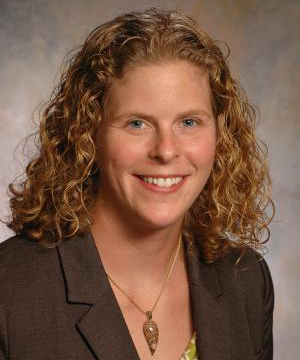 The goals of the Nancy Grace Roman Technology Fellowship in Astrophysics program are to give early career researchers the opportunity to develop the skills necessary to lead astrophysics flight instrumentation development projects and become principal investigators (PIs) of future astrophysics missions; to develop innovative technologies that have the potential to enable major scientific breakthroughs; and to foster new talent by putting early-career instrument builders on a trajectory towards long-term positions. Read more >> Related Links: KICP Members: Abigail G. Vieregg AUGER: 50 year-old mystery has been solved AUGER collaboration, September 22, 2017 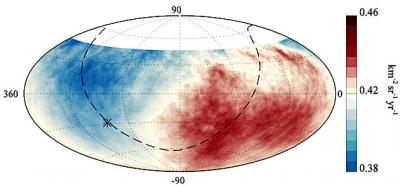 From galaxies far far away! In a paper to be published in Science on 22 September, the Pierre Auger Collaboration reports observational evidence demonstrating that cosmic rays with energies a million times greater than that of the protons accelerated in the Large Hadron Collider come from much further away than from our own Galaxy. Ever since the existence of cosmic rays with individual energies of several Joules (1 Joule = ~ 6x1018 eV) was established in the 1960s, speculation has raged as to whether such particles are created there or in distant extragalactic objects. The 50 year-old mystery has been solved using cosmic particles of mean energy of 2 Joules recorded with the largest cosmic-ray observatory ever built, the Pierre Auger Observatory in Argentina. It is found that at these energies the rate of arrival of cosmic rays is ~ 6% greater from one half of the sky than from the opposite one, with the excess lying 120 ̊ away from the Galactic centre. In the view of Professor Karl-Heinz Kampert (University of Wuppertal), spokesperson for the Auger Collaboration, which involves over 400 scientists from 18 countries, "We are now considerably closer to solving the mystery of where and how these extraordinary particles are created, a question of great interest to astrophysicists. Our observation provides compelling evidence that the sites of acceleration are outside the Milky Way". Professor Alan Watson (University of Leeds), emeritus spokesperson, considers this result to be "one of the most exciting that we have obtained and one which solves a problem targeted when the Observatory was conceived by Jim Cronin and myself over 25 years ago". Cosmic rays are the nuclei of elements from hydrogen (the proton) to iron. Above 2 Joules the rate of their arrival at the top of the atmosphere is only about 1 per sq km per year, equivalent to one hitting the area of a football pitch about once per century. Such rare particles are detectable because they create showers of electrons, photons and muons through successive interactions with the nuclei in the atmosphere. These showers spread out, sweeping through the atmosphere at the speed of light in a disc-like structure, similar to a dinner-plate, several kilometres in diameter. They contain over ten billion particles and, at the Auger Observatory, are detected through the Cherenkov light they produce in a few of 1600 detectors, each containing 12 tonnes of water, spread over 3000 km2 of Western Argentina, an area comparable to that of Rhode Island. The times of arrival of the particles at the detectors, measured with GPS receivers, are used to find the arrival directions of events to within ~ 1 ̊. By studying the distribution of the arrival directions of more than 30000 cosmic particles the Auger Collaboration has discovered an anisotropy, significant at 5.2 standard deviations (a chance of about two in ten million), in a direction where the distribution of galaxies is relatively high. Although this discovery clearly indicates an extragalactic origin for the particles, the actual sources have yet to be pinned down. The direction of the excess points to a broad area of sky rather than to specific sources as even particles as energetic as these are deflected by a few 10s of degrees in the magnetic field of our Galaxy. The direction, however, cannot be associated with putative sources in the plane or centre of our Galaxy for any realistic configuration of theGalactic magnetic field. Cosmic rays of even higher energy than the bulk of those used in this study exist, some even with the kinetic energy of well-struck tennis ball. As the deflections of such particles are expected to be smaller, the arrival directions should point closer to their birthplaces. These cosmic rays are even rarer and further studies are underway using them to try to pin down which extragalactic objects are the sources. Knowledge of the nature of the particles will aid this identification and work on this problem is targeted in the upgrade of the Auger Observatory to be completed in 2018. Read more >> Related Links: KICP Members: Angela V. Olinto; Paolo Privitera; Alan Watson Scientific projects: Pierre Auger Observatory (AUGER) Observatory detects extragalactic cosmic rays hitting the Earth UChicago News, September 22, 2017 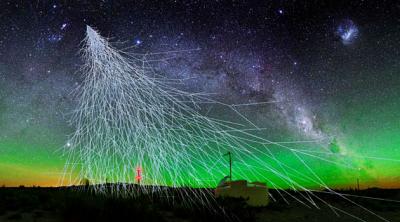 A high-energy cosmic ray enters the atmosphere, causing a shower of particles that is picked up by the Pierre Auger Observatory in Argentina. The collaboration announced these rays must be coming from beyond the Milky Way. Courtesy of A. Chantelauze, S. Staffi, L. Bret Finding is an important step to understanding origin of mysterious particles Fifty years ago, scientists discovered that the Earth is occasionally hit by cosmic rays of enormous energies. Since then, they have argued about the source of those ultra-high-energy cosmic rays -- whether they came from our galaxy or outside the Milky Way. The answer lies in a galaxy or galaxies far, far away, according to a report published Sept. 22 in Science by the Pierre Auger Collaboration, which includes University of Chicago scientists. The internationally run observatory in Argentina, co-founded by the late UChicago Nobel laureate James Cronin, has been collecting data on such cosmic rays for a more than a decade. The collaboration found that the rate of such cosmic particles, whose energies are a million times greater than that of the protons accelerated in the Large Hadron Collider, is about six percent greater from one side of the sky than the other, in a direction where the distribution of galaxies is relatively high. "We are now considerably closer to solving the mystery of where and how these extraordinary particles are created -- a question of great interest to astrophysicists," said University of Wuppertal Prof. Karl-Heinz Kampert, spokesperson for the Auger Collaboration, which involves more than 400 scientists from 18 countries. "Our observation provides compelling evidence that the sites of acceleration are outside the Milky Way." Cosmic rays are the nuclei of elements from hydrogen to iron. The highest-energy cosmic rays, those of interest in this study, only strike about once per square kilometer per year -- equivalent to hitting the area of a soccer field about once per century. Such rare particles are detectable because they create showers of secondary particles --including electrons, photons and muons -- as they interact with the nuclei in the atmosphere. These cosmic ray showers spread out, sweeping through the atmosphere at the speed of light in a disc-like structure, like a dinner plate but several kilometers in diameter. At the Auger Observatory, the shower particles are detected through the light they produce in several of 1,600 detectors, spread over 3,000 square kilometers of western Argentina -- an area comparable to that of Rhode Island -- and each containing 12 tons of water. Tracking these arrivals tells scientists the direction from which the cosmic rays came. After racking up detections of more than 30,000 cosmic particles, the Auger Collaboration found one section of the sky was producing significantly more than its share. The probability of this happening by a random fluctuation is extremely small, the collaborators said: a chance of about two in ten million. "This result unequivocally establishes that ultra-high-energy cosmic rays are not just random wanderers of our nearby universe," said Paolo Privitera, UChicago professor in astronomy and astrophysics, who heads the U.S. groups participating in the project. Privitera credited Cronin, who died last year, with the original vision for the Auger observatory back in 1992. "The imprint detected in their arrival directions -- a tantalizing evidence for extragalactic origin -- required several years of observations with a detector working, in Jim Cronin's words, 'like a Swiss clock.' It was a tribute to Jim's vision to build an observatory and unveil the mystery of the origin of the most energetic particles in the universe." Privitera said. Even at these high energies, cosmic rays may be significantly deflected by magnetic fields in outer space; thus the excess found by the Auger Collaboration in a broad section of the sky cannot yet determine which extragalactic objects might be the specific sources, the authors said. The observatory is looking to examine even higher-energy cosmic rays -- rarer, but less likely to be deflected -- which may provide a clearer route to their sources. Work on this problem is targeted for the observatory's upgrade, scheduled to be completed in 2018. Citation: "Observation of a Large-scale Anisotropy in the Arrival Directions of Cosmic Rays above 8x1018 eV." Science, Sept. 22, 2017. doi: 10.1126/science.aan4338 Funding: National Science Foundation Read more >> Related Links: KICP Members: Angela V. Olinto; Paolo Privitera Scientific projects: Pierre Auger Observatory (AUGER) LIGO announces detection of gravitational waves from colliding neutron stars UChicago News, October 16, 2017 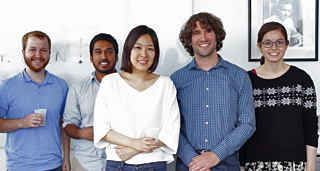 Courtesy of Assoc. Prof. Daniel Holz UChicago physicists calculate expansion rate of universe using breakthrough research About 130 million years ago, two incredibly heavy, dense neutron stars spiraled around each other. Their dance brought them closer to one another and made them spin faster, until they were circling more than 100 times per second. The ensuing collision sent a shockwave through the very fabric of spacetime, which traveled across the universe at the speed of light until it rippled through the Earth at 7:41 a.m. Central time on Aug. 17, 2017. The U.S.-based Laser Interferometer Gravitational-Wave Observatory and the Virgo detector in Italy announced on Oct. 16 that all three of their detectors had picked up the ripples, or gravitational waves, from this event. Two seconds later, a satellite looking for gamma rays registered a burst from the same direction of the sky. The event was the first time humans have directly observed two neutron stars, the collapsed cores of bigger stars, smashing into one another. Unlike the black holes that merged in LIGO's first detection of gravitational waves two years ago -- a breakthrough that earned this year's Nobel Prize in Physics -- the newly married neutron stars gave off a bright flash of light visible for days afterward. That allowed the world's most advanced telescopes to point in that direction of the sky, including the Dark Energy Camera in Chile and the Hubble Space Telescope and Chandra X-ray Observatory in orbit above the Earth. The result is the first measurement of a gravitational wave event in multiple mediums -- optical, gamma ray and X-ray as well as gravitational waves -- and scientists said the combination opens a wealth of new scientific discovery. This includes determining the precise location of the galaxy where the event happened, which no previous LIGO detection has been able to do. They also confirmed that gravitational waves travel at approximately the speed of light, verifying a century-old Einstein prediction. And they used gravitational waves to directly calculate the rate at which the universe is expanding. "Any one of these findings would be groundbreaking on its own merits, and here we got all the pieces together in the span of 12 hours," said Daniel Holz, an associate professor of physics and astrophysics who led the UChicago team, which was involved in both the LIGO and Dark Energy Survey discoveries. "This is akin to seeing the lightning bolt and hearing the thunder. We have just witnessed the birth of a new field of astronomy. It's been an unbelievable few weeks." The Hubble constant: Chasing a 'white whale' Holz is a co-author on 12 papers published Oct. 16 on the event, including a leading role in one published in Nature announcing an entirely new measurement of the rate at which the universe is expanding. Originally suggested by famed astronomer and UChicago alumnus Edwin Hubble, this number, called the Hubble constant, is important to such central questions in astrophysics as the age of the universe and the nature of dark matter and dark energy. It's also at the center of a raging controversy. Everyone agrees on the ballpark number, but whether it's exactly 67 or 72 kilometers per second per megaparsec is hotly debated. Different methods of computing the constant spit out different results, and, Holz said, "they disagree by more than they should." Gravitational waves should be one of the cleanest ways to compute the number, Holz said, because scientists understand the physics of what's happening very well. "Other ways involve many more steps and calibrations that we aren't sure about," he said, "but gravitational waves give you this very elegant way to perform this fundamental measurement." The initial calculations show LIGO's number smack in the middle of other estimates, at 70 kilometers per second per megaparsec. In 2006 Holz was the first to suggest the concept of calculating the Hubble constant via gravitational waves from a gamma-ray burst, calling it a "standard siren," a nod to the term used to describe certain types of supernovas used for the same calculation called "standard candles." "Everyone has their white whale, and mine has been to detect the Hubble constant with gravitational waves," he said. "And now we've done it. A few hours after the discovery I sat down and made the plot, and there it was, the culmination of all those years, right in front of me. And it was beautiful." A literal and figurative 'gold mine' The neutron star merger is also the closest signal to be detected by gravitational waves, and the closest gamma-ray burst -- only about 130 million light-years away, as opposed to the first black hole merger, which was more than a billion light-years away. "That's really in our cosmological backyard," Holz said. Neutron stars are unfathomably dense -- the weight of one-and-a-half suns packed into a ball just a dozen or so miles across. They give out a fainter gravitational wave signal than black holes, Holz said, so such proximity is necessary to capture them -- even for the extraordinary sensitivity of the detectors. Most scientists, even optimists, predicted it would be a decade before they would see a neutron star collision and be able to take such a measurement in all mediums, he said. "This event is a gold mine -- literally and figuratively," Holz said. "We're going to learn an incredible amount about astrophysics and cosmology from studying its properties. We're also watching the production of most of the gold in the universe," since initial studies of the event suggest that such star collisions are likely to be the origin of the heaviest elements in the universe, including gold. (Back-of-the-envelope calculations indicate that this single collision produced an amount of gold greater than the weight of the Earth, Holz said.) This solves a decades-long mystery of where about half of all elements heavier than iron are produced. The researchers also noted the incredible good fortune of the detection's timing. There are three gravitational wave detectors in the world: two in the U.S. run by LIGO, located in Washington and Louisiana, and one in Italy. The Italian detector had just started up, and the Louisiana and Hanford locations were just a week from shutting down for a year of maintenance. The event took place in the brief three-week window when all three gravitational wave detectors happened to be on -- crucial for an accurate triangulation of the location. Each detector has two identical arms several miles long, held at right angles to one another. Lasers run the length of each arm, perfectly calibrated to combine in tune with one another, unless one arm suddenly becomes slightly shorter or longer than the other -- as would only happen if the universe itself is rippling. Aside from analyzing all of the data they already have, Holz said, they are still measuring the radio waves produced from the ejected material interacting with the surrounding environment. "We'll be mining this data for a long time," he said. "With this we truly open a new era of astronomy," he said. "We used to have only one way to look at the sky, but by combining existing telescopes and gravitational waves, we can learn staggeringly more about the universe." Hundreds of scientists are now sorting through the results. The UChicago LIGO team included postdoctoral fellow Ben Farr (now a professor at the University of Oregon) and graduate students Hsin-Yu Chen (now at Harvard), Zoheyr Doctor and Maya Fischbach, as well as Reed Essick, who started this fall at UChicago as a Kavli Institute for Cosmological Physics Fellow. The UChicago team works closely with colleagues at Fermi National Acceleratory Laboratory and elsewhere on the Dark Energy Survey, which captured optical pictures of the merger just hours after LIGO and Virgo detected the gravitational waves. The scientists looked by eye at the telescope's digital photographs for bright spots that hadn't been there before in the section of the sky LIGO indicated, and found a new source in the galaxy labeled NGC 4993. "Because we're on the telescope nearly every night at that time of year, we were able to watch it peak and then fade very rapidly and could precisely map its brightness and color over time," said Josh Frieman, UChicago professor of astronomy and astrophysics and the director of the Dark Energy Survey. "This development is very exciting for us, because more data on the expansion rate of the universe will help us chart the billion-year history of the cosmic tug-of-war between gravity and dark energy." Holz was on a plane from Hong Kong when the Aug. 17 gravitational wave event happened. He landed to dozens of texts and notifications. "I walked off the plane with my laptop held up to my face, and that's basically how I've been walking around ever since," he said. "Nature has given us these wonderful gifts. We're all sleep-deprived, but no one's complaining." Citation: "A gravitational-wave standard siren measurement of the Hubble constant." Nature, Oct. 16, 2017. Read more >> Related Links: KICP Members: Reed C. Essick; Ben Farr; Joshua A. Frieman; Daniel E. Holz KICP Students: Hsin-Yu Chen; Zoheyr Doctor; Maya Fishbach Scientific projects: Laser Interferometer Gravitational-wave Observatory (LIGO) UChicago astrophysicists to catch particles from deep space on NASA balloon mission Uchicago News, October 26, 2017 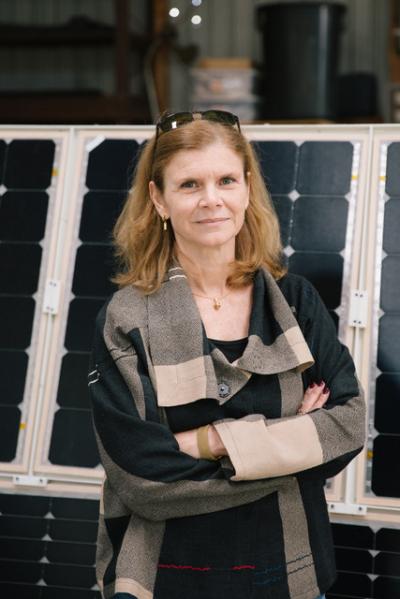 A team led by Prof. Angela Olinto was awarded NASA funding to fly an ultra-long duration balloon mission with an innovative ultra-sensitive telescope to pick up cosmic rays and neutrinos coming from deep space. Planned for launch in 2022, the Extreme Universe Space Observatory on a Super Pressure Balloon is a major step toward a planned mission to send a probe to space. "This program will help us solve the great mystery of where in the universe these highly energetic particles are coming from, and how they could possibly be made," said Olinto, the Albert A. Michelson Distinguished Service in Astronomy and Astrophysics. The Earth is constantly hit by particles from space. One type is cosmic rays: sub-atomic nuclei traveling from every direction in space, accelerated by supernovas and other unknown cosmic phenomena. Similarly mysterious are neutrinos, the "ghost particles" that pass through us all the time, mostly undetected. There is much we don't know about them -- most pressingly where they come from, although studies at the Pierre Auger Observatory in Argentina recently confirmed that the most energetic cosmic rays that hit the Earth are coming from beyond our own galaxy. The most extreme cosmic rays and neutrinos offer the most clues to their origins and travels, as they can resist the effects of magnetic fields in space that curve the paths of weaker particles. These are what the new NASA -- built balloon will be hunting. "It's very difficult to explain some of these particles using our current model of the universe," Olinto said. "This balloon offers a truly unique opportunity to learn more about one of the great puzzles in astrophysics. In addition, once neutrinos are observed, we can test their interactions at energies well beyond what we can make in the laboratory." Taking measurements from space offers a much wider field of view to catch these rare particles, Olinto said. The Earth's atmosphere makes these ghostly particles observable as faint flashes of light moving at ultra-high speeds. Hence the football-field-sized balloon, which can travel for months at 20 miles into the atmosphere, carrying the pioneering 3,000-pound telescope, which was built by an international team. Three different mirrors will hang from the balloon, directing light toward two different types of detectors. One system is built to capture the radiation from extremely energetic neutrinos coming from the Earth below; the other is a fluorescence camera, which picks up the trails of excited nitrogen nuclei as cosmic ray showers cross the atmosphere. The mission will launch from New Zealand, so that the balloon can catch a ride on the polar jet stream that circles the bottom part of the globe. The researchers hope the balloon will make several trips around the Antarctic over the course of 100 or more days. The flight will provide proof of concept for the planned Probe of Extreme Multi-Messenger Astrophysics, a pair of orbiting satellites with the same capabilities, but with several orders of magnitude more sensitivity. A Olinto-led team of scientists and NASA engineers is designing the POEMMA mission for consideration by the 2020 Astronomy and Astrophysics Survey, which sets scientific priorities for the decade for NASA, the National Science Foundation and the U.S. Department of Energy. POEMMA could offer some fundamental new insights about the universe, Olinto said. "For example, if there are extra dimensions of space, then the cross-section of neutrinos will change, and we should be able to see that." This is the second balloon launch to prepare for the space mission. The first balloon, which lifted off in April 2017 from New Zealand, sprang a leak early in the mission and sank into the Pacific. This new iteration will have much expanded scientific capabilities, Olinto said. An overnight test flight is planned in 2020 in the United States before the official launch in 2022. In addition to the University of Chicago, the team includes the Colorado School of Mines, the Lehman College (CUNY), the Marshall Space Flight Center and the University of Alabama-Huntsville. Read more >> Related Links: KICP Members: Angela V. Olinto Scientific projects: Pierre Auger Observatory (AUGER) Colliding Neutron Stars Could Settle Cosmology's Biggest Controversy Quanta Magazine, October 26, 2017 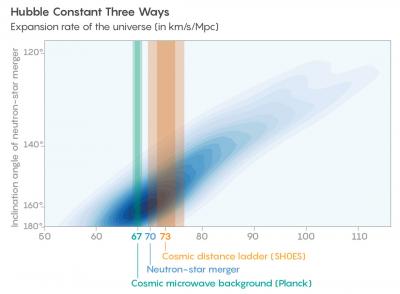 Newly discovered "standard sirens" provide an independent, clean way to measure how fast the universe is expanding. To many cosmologists, the best thing about neutron-star mergers is that these events scream into space an otherwise close-kept secret of the universe. Scientists combined the gravitational and electromagnetic signals from the recently detected collision of two of these stars to determine, in a cleaner way than with other approaches, how fast the fabric of the universe is expanding -- a much-contested number called the Hubble constant. In the days since the neutron-star collision was announced, Hubble experts have been surprised to find themselves discussing not whether events like it could settle the controversy, but how soon they might do so. Scientists have hotly debated the cosmic expansion rate ever since 1929, when the American astronomer Edwin Hubble first established that the universe is expanding -- and that it therefore had a beginning. How fast it expands reflects what's in it (since matter, dark energy and radiation push and pull in different ways) and how old it is, making the value of the Hubble constant crucial for understanding the rest of cosmology. And yet the two most precise ways of measuring it result in different answers, with a curious 8 percent discrepancy that "is currently the biggest tension in cosmology," said Dan Scolnic of the University of Chicago's Kavli Institute for Cosmological Physics. The mismatch could be a clue that cosmologists aren't taking into account important details that have affected the universe's evolution. But to see if that's the case, they need an independent check on the measurements. Neutron-star collisions -- newly detectable by the Laser Interferometer Gravitational-Wave Observatory (LIGO) and Virgo detectors -- seem to be just the thing. "This first [collision] gives us a seat at the cosmology table," Daniel Holz, an astrophysicist with the University of Chicago and LIGO who was centrally involved in the new Hubble measurement, said in an email. "And as we get more, we can expect to play a major role in the field." In an expanding universe, the farther away an astronomical object is, the faster it recedes. The Hubble constant says how much faster. Edwin Hubble himself estimated that galaxies move away from us 500 kilometers per second faster for each additional megaparsec of distance between us and them (a megaparsec is about 3.3 million light-years). This was a gross overestimate; by the 1970s, astrophysicists favored values for the Hubble constant around either 50 or 100 kilometers per second per megaparsec, depending on their methods. As errors were eliminated, these camps met near the middle. However, in the past year and a half, the Hubble trouble has reheated. This time, 67 stands off against 73. The higher estimate of 73 comes from observing lots of astronomical objects and estimating both distance and velocity for each one. It's relatively easy to see how fast a star or galaxy is receding by looking at its "redshift" -- a reddening in color that happens for the same reason the sound of a receding ambulance's siren drops in pitch. Correct for an object's "peculiar velocity," caused by the gravitational pull of other objects in its neighborhood, and you're left with its recessional velocity due to cosmic expansion. Historically, however, it has proven much, much harder to measure the distance to an object -- the other data point needed to calculate the Hubble constant. To gauge how far away things are, astronomers build up rungs on a "cosmic distance ladder" in which each rung calibrates more-distant rungs. They start by deducing the distances to stars in the Milky Way using parallax -- the stars' apparent motion across the sky over the course of the year. With this information, astronomers can deduce the brightness of so-called Cepheid stars, which can be used as so-called "standard candles" because they all shine with a known intrinsic brightness. They then spot these Cepheid stars in nearby galaxies and use them to calculate how far away the galaxies must be. Next, the Cepheids are used to calibrate the distances to Type Ia supernovas -- even brighter (though rarer) standard candles that can be seen in faraway galaxies. Each jump from one rung to the next risks miscalculation. And yet, in 2016, a team known as SH0ES used the cosmic distance ladder approach to peg the Hubble constant at 73.2 with an accuracy of 2.4 percent. However, in a paper published the same year, a team used the Planck telescope's observations of the early universe to obtain a value of 67.8 for the current expansion rate -- supposedly with 1 percent accuracy. The Planck team started from the faint drizzle of ancient light called the cosmic microwave background (CMB), which reveals the universe as it looked at a critical moment 380,000 years after the Big Bang. The CMB snapshot depicts a simple, nearly smooth, plasma-filled young universe. Pressure waves of all different wavelengths rippled through the plasma, squeezing and stretching it and creating subtle density variations on different length scales. At the moment recorded in the CMB, pressure waves with particular wavelengths would have undergone just the right fraction of an undulation since the Big Bang to all reach zero amplitude, momentarily disappearing and creating smooth plasma densities at their associated length scale. Meanwhile, pressure waves with other wavelengths undulated just the right amount to exactly peak in amplitude at the critical moment, stretching and squeezing the plasma to the full extent possible and creating maximum density variations at their associated scales. These peaks and troughs in density variations at different scales, which can be picked up by telescopes like Planck and plotted as the "CMB power spectrum," encode virtually everything about the young universe. The Hubble constant, in particular, can be reconstructed by measuring the distances between the peaks. "It's a geometric effect," explained Leo Stein, a theoretical physicist at the California Institute of Technology: The more the universe has expanded, the more the light from the CMB has curved through expanding space-time, and the closer together the peaks ought to appear to us. Other properties of nature also affect how the peaks end up looking, such as the behavior of the invisible "dark energy" that infuses the fabric of the cosmos. The Planck scientists therefore had to make assumptions about all the other cosmological parameters in order to arrive at their estimate of 67 for the Hubble constant. The similarity of the two Hubble measurements "is amazing" considering the vastly different approaches used to determine them, said Wendy Freedman, an astrophysicist at the University of Chicago and a pioneer of the cosmic distance ladder approach. And yet their margins of error don't overlap. "The universe looks like it's expanding about eight percent faster than you would have expected based on how it looked in its youth and how we expect it to evolve," Adam Riess of Johns Hopkins University, who led the SH0ES team, told Scientific American last year. "We have to take this pretty darn seriously." The 67-versus-73 discrepancy could come down to an unknown error on one side or both. Or it might be real and significant -- an indication that the Planck team's extrapolation from the early universe to the present is missing a cosmic ingredient, one that changed the course of history and led to a faster expansion rate than otherwise expected. If a hypothesized fourth type of neutrino populated the infant universe, for instance, this would have increased the radiation pressure and affected the CMB peak widths. Or dark energy, whose repulsive pressure accelerates the universe's expansion, might be getting denser over time. Suddenly, neutron-star collisions have materialized to cast the deciding vote. The crashing stars serve as "standard sirens," as Holz and Scott Hughes of the Massachusetts Institute of Technology dubbed them in a 2005 paper, building on the work of Bernard Schutz 20 years earlier. They send rushes of ripples outward through space-time that are not dimmed by gas or dust. Because of this, the gravitational waves transmit a clean record of the strength of the collision, which allows scientists to "directly infer the distance to the source," Holz explained. "There is no distance ladder, and no poorly understood astronomical calibrations. You listen to how loud the [collision] is, and how the sound changes with time, and you directly infer how far away it is." Because astronomers can also detect electromagnetic light from neutron-star collisions, they can use redshift to determine how fast the merged stars are receding. Recessional velocity divided by distance gives the Hubble constant. From the first neutron-star collision alone, Holz and hundreds of coauthors calculated the Hubble constant to be 70 kilometers per second per megaparsec, give or take 10. (The major source of uncertainty is the unknown angular orientation of the merging neutron stars relative to the LIGO detectors, which affects the measured amplitude of the signal.) Holz said, "I think it's just pure luck that we're smack in the middle," between the cosmic-distance-ladder and cosmic-microwave-background Hubble estimates. "We could easily shift to one side or the other." The measurement's accuracy will steadily improve as more standard sirens are heard over the next few years, especially as LIGO continues to ramp up in sensitivity. According to Holz, "With roughly 10 more events like this one, we'll get to 1 percent [of error]," though he stresses that this is a preliminary and debatable estimate. Riess thinks it will take more like 30 standard sirens to reach that level. It all depends on how lucky LIGO and Virgo got with their first detection. "I do think the method has the potential to be a game changer," said Freedman. "How fast this will occur [or] what the rate of these objects will be ... we don't yet know." Scolnic, who was part of SH0ES, said his team's tension with Planck's measurement is so large that "the standard siren approach doesn't need to get to 1 percent to be interesting." As more standard sirens resound, they'll gradually home in on the Hubble constant once and for all and determine whether or not the expansion rate agrees with expectations based on the young universe. Holz, for one, is exhilarated. "I've dedicated the last decade of my life in the hopes of making one plot: a standard siren measurement of the Hubble. I got to make my Hubble plot, and it is beautiful." Read more >> Related Links: KICP Members: Wendy L. Freedman; Daniel E. Holz; Daniel M. Scolnic Scientific projects: Laser Interferometer Gravitational-wave Observatory (LIGO) Chicago Professor Leads NASA Balloon Mission to Study 'Ghost Particles' Chicago Tonight, November 3, 2017 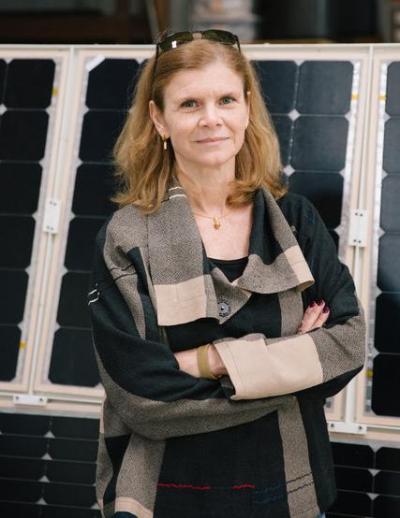 What is Angela Olinto hoping to learn about the universe with a football field-sized balloon and a 3,000-pound telescope? To start, how about whether there are extra dimensions of space? The entire field encompassing Olinto's career began with a balloon ride in 1912, when Austrian physicist Victor Hess ascended 3-plus miles during a near total solar eclipse and discovered cosmic rays, or high-energy particles coming from beyond our own galaxy. Now, Olinto, a professor in the University of Chicago's Department of Astronomy and Astrophysics, is leading a first-of-its kind mission to launch a $7 million telescope on a super pressure balloon with the goal of learning more about these mysterious subatomic particles, the origins of which are still unknown. "We don't really have a clue how the universe produces these ultra high-energy cosmic rays," Olinto said. "We know they come from outside of our galaxy, probably galaxies very far away from us." Planned for launch in 2022, the NASA-built Extreme Universe Space Observatory Super Pressure Balloon, or EUSO-SPB1, will take off from New Zealand and ride the polar jet stream that circles the bottom part of the globe. Researchers hope the balloon will make several trips around the Antarctic over 100 or more days. Traveling at 20 miles into the atmosphere, the balloon will carry an ultra-sensitive telescope that will feed information to Olinto's team. The balloon will include three mirrors that direct light toward two types of detectors on the telescope: One built to pick up trails of nitrogen as cosmic ray showers cross the atmosphere; and one designed to capture the radiation from high-energy neutrinos, often called "ghost particles," coming from the Earth below. Cosmic rays and neutrinos are known to pass through Earth without being affected, Olinto said. But scientists don't know much about these particles because they are extremely rare. They're also small and very fast, moving at the speed of light. "Just like we see meteorites, we can see these particles in the atmosphere," Olinto said. "The difference is that meteorites are larger and much slower." By taking measurements from space using the balloon, Olinto and other researchers will have a significantly wider field of view to catch the particles. They might even be able to observe neutrinos traveling upward from Earth, which has never been witnessed. "It's going to be so much fun if we see them," Olinto said. The balloon mission will serve as a proof of concept for another planned NASA mission that could provide groundbreaking new insights about the universe. A team of scientists and NASA engineers led by Olinto is already designing the larger mission - the Probe of Extreme Multi-Messenger Astrophysics, or POEMMA - which will send a pair of orbiting satellites into space to study cosmic rays with even more sensitive telescopes. "It's much cheaper to try to do these things from a balloon than from space," Olinto said. "The balloon is one way to show that we can do this from space, which I'm pretty sure we can." Although years away, POEMMA has the potential to produce some out-of-this-world discoveries, Olinto said. "For example, if there are extra dimensions of space, then the cross-section of neutrinos will change," she said, "and we should be able to see that." Read more >> Related Links: KICP Members: Angela V. Olinto Uncharted UChicago Magazine, November 8, 2017 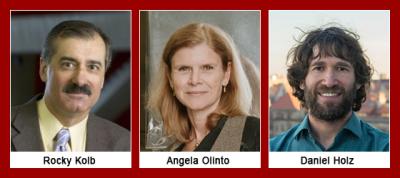 From dark matter to gravitational waves to a balloon-borne telescope, scientists discuss how they handle setbacks. Scientific progress follows a winding path, filled with detours and wrong turns - a natural result of exploring the unknown. Science makes headway by challenging itself, identifying mistakes, self-correcting, and persevering. That's how alchemy becomes chemistry, astrology becomes astronomy, and belief in the four humors leads to medicine. UChicago scientists have seen their share of scientific wandering. One describes searching for something that no one is sure even exists, and how not finding it is in fact a discovery. Another explains how skepticism - of historical discoveries as well as his own team's data - leads to more reliable methods, sensitive instruments, and credible results. And one story is a study in resilience in the face of repeated misfortune, and in how catastrophe can give rise to creativity and improvisation. Science is not a "lockstep march toward progress," says Edward "Rocky" Kolb, dean of the Physical Sciences Division. He compares the process to Brownian motion, with ideas bouncing around erratically but with a general direction toward deeper understanding and more correct results. "How do we know what the right direction is? We bump into a wall and say, 'Oops, that's the wrong way.'" High hopes Angela Olinto improvises when her experiment crashes. On April 25, astrophysicist Angela Olinto let go of her balloon. Launched from Wanaka, New Zealand, it rose more than 20 miles into the sky - a stadium - sized super pressure helium balloon, carrying a one-ton UV telescope and Olinto's hopes to discover the secrets of ultra-high-energy cosmic rays. "I find the most energetic particles exciting," says Olinto, the Albert A. Michelson Distinguished Service Professor of Astronomy and Astrophysics, "because they challenge our theories on how they became so energized." The extremely rare charged particles strike Earth at a rate of one particle per square kilometer per century. When they collide with the atmosphere, they produce a cascade of secondary particles, including neutrinos. If astrophysicists can observe those particle showers, they can look backward and search for their origin. The balloon's payload, an instrument called the Extreme Universe Space Observatory (EUSO), was designed to measure the UV light produced when nitrogen molecules in the atmosphere are energized by the cascade and then return to ground state. The balloon was scheduled to carry the fluorescence detector for 100 days, testing the equipment but "mostly collecting data," says Olinto. Three days into the flight, the balloon sprang a leak. By day 12, it was at the bottom of the South Pacific Ocean. NASA planned for this possibility and sank the balloon, using a remote termination command to prevent a dangerous descent. NASA's 30-year-old balloon program had conducted an environmental analysis of an open-ocean landing and designed the payload to act as an anchor, pulling the entire balloon quickly to the ocean floor to protect marine life. Olinto had no say over if or when the balloon should come down. "We are responsible for the payload," she says. "The balloon and the flight - that's all under NASA's control." Despite her disappointment, Olinto stays positive. "This was not my worst nightmare. That would have been completing the 100-day flight and finding our equipment doesn't work well." The 13-country EUSO collaboration was able to collect some data, in part because after the leak the researchers changed their strategy to optimize what time they had left. "We had to improvise," says Olinto. Normally they would collect data on moonless nights, when the particle shower lights are best observed, and download data when the moon is bright. When the leak was confirmed, they downloaded no matter the moon's state. Luckily their launch window opened during the new moon, and they collected about 60 gigabytes of data. The balloon's leak is one of many setbacks the EUSO project has faced. A version of EUSO was originally designed for the International Space Station (ISS) in the early 2000s, but after the 2003 Space Shuttle Columbia disaster, NASA halted space shuttle missions for more than two years pending the investigation. The shuttle program was then phased out in 2011. In 2012, when the detector was reconfigured for the Japanese Experiment Module of the ISS and became JEM-EUSO, Olinto was invited to lead the US branch of the 13-country collaboration. But several factors, compounded by the 2011 Fukushima meltdown, made the future of that project uncertain. So JEM-EUSO was broken into several projects, one of which was EUSO-SPB, aboard the super pressure balloon, whose launch was then delayed a month by weather concerns. "I have been in many situations where it looked like the whole effort was about to dissolve into dust," says Olinto. Yet she finds those situations filled with creative energy, which she funnels into formulating new approaches. "The goals in research are flexible," she says, "so the alternate path and the final destination are redefined when challenges are overwhelming." Olinto's new plan is to build another telescope and add a neutrino detector. The project's second generation, EUSO-SPB2, received a NASA award in September. "No one has seen ultra-high-energy neutrinos before," she says. The second flight will allow EUSO to collect more data and test the neutrino instrument's capabilities. "It will be easier to predict and prepare for what can go wrong, learning from the first flight, where lots of things went wrong." Second time's the charm. And the fourth. And the fifth. Daniel Holz, SM'94, PhD'98, explains fake gravitational waves. On Monday, September 14, 2015, at 4:51 a.m. CDT, the twin Laser Interferometer Gravitational-wave Observatory (LIGO) detectors - in Hanford, Washington, and Livingston, Louisiana - picked up the signal of gravitational waves. Produced by the collision and merging of two massive black holes, it was the first observation of the ripples in space-time that Albert Einstein had predicted a century earlier. Five months after the detection - once scientists, including UChicago associate professor of physics Daniel Holz, SM'94, PhD'98, had checked, rechecked, and triple-checked the data - they announced their results to the world. As it turns out, however, this wasn't the first time LIGO had been through this drill; it was just the first time that it turned out not to be a drill. Five years earlier, before Holz joined the collaboration, a less sensitive previous incarnation of LIGO had picked up what appeared to be gravitational waves. The collaboration had gone through all the usual steps with the detected event: "It was studied, taken apart, everything, hundreds and hundreds of people involved" over several months, says Holz. A paper was drafted; the decision was made to submit it for publication. "We're talking about people arguing about the title of the paper," Holz says - it was that close to done. There was just one problem: there had been no event. The initial signal had been a "blind injection," a test designed by a sworn-to-secrecy team within LIGO to see if the equipment - and most important, the scientists interpreting the data - could distinguish between a false positive and an actual event. "The answer," Holz says, "was, 'No, this isn't real.' The answer was, 'We're not publishing this. We haven't just detected gravitational waves, and no one's getting a Nobel Prize.'" It might seem like "a complete waste of time," Holz says of the negated months of work, but it's "actually useful. It makes you go through the whole process" and ask, what went wrong, what did they get right, and how could everything be improved? It keeps the scientists on their toes. Such tests are standard in the field of gravitational waves research, and an understandable precaution when you're working to confirm a key part of the general theory of relativity. The abundance of caution is part of the legacy of the first scientist to claim to have detected gravitational waves, Joe Weber of the University of Maryland - the "father of the field," Holz says, and "an absolutely brilliant experimenter." In 1969 Weber published a paper in Physical Review Letters that described what he had detected. But the signal he had found was "at least five orders of magnitude too loud," Holz explains. Others "could not think of any way from the theory side that there really could be waves that were that loud." No one else was able to reproduce Weber's results. Nonetheless, he remained convinced and continued to make more "detections" throughout his life. Weber's example "set a particular tone" to the search for gravitational waves, Holz says, and so the goal for LIGO was "to have our detection, especially our first detection, to be so clear, so impressive, that no one could possibly doubt what we've done." After the false alarm of the blind injection, which came during the era of "initial" LIGO, improvements in the detectors made them far more sensitive. By September 2015 "advanced" LIGO was ready - or almost. In fact, at that point the new equipment was not officially online. "We were still fiddling with the machine," Holz says. "We were going to turn it on very soon." So when the detection came through, everyone assumed it had to be an injection. That's when they received word from the top: the blind injection system was not yet up and running. And if such a "perfect event" wasn't an injection, it could be only one thing. "We still ripped it apart," says Holz. Without the blind injection system up and running, it was even more important to make sure they weren't fooling themselves. "It was five months of a thousand people doing their very best to figure out how this might not be real." But it was real. "We couldn't make the event go away." More gravitational waves have followed - confirmed detections in December 2015 and January 2017. Conservatism, however, still rules: an October 2015 detection is classified only as a "candidate" gravitational wave because it wasn't loud enough for the collaboration to be confident. To this day, however, LIGO has yet to switch on its blind injection system. "Because we've seen real events, we know it's working," Holz says. So the last thing they need is fake signals to analyze. "At this point it's becoming difficult to keep up with the real events that keep showing up." Process of elimination Rocky Kolb searches for the mysterious particle. Astrophysicists theorize that about 85 percent of the universe's mass is dark matter, which can be detected only through its gravitational effects. Galaxies and galaxy clusters spin so quickly that they should have torn themselves apart based on their observable matter. Something is holding them together, but no one knows what. Scientists know much about what dark matter is not: It is not the visible stuff of stars and planets. It is not dark clouds of baryonic (ordinary atomic) matter, which can be observed absorbing radiation passing through them. And it's not antimatter, which would produce gamma rays when it annihilates with matter. So what is it? One hypothetical candidate is WIMPs - weakly interacting massive particles that don't interact much with ordinary matter, proposed more than 30 years ago. As a graduate student at the University of Texas, Austin, in the 1970s, Kolb, now the Arthur Holly Compton Distinguished Service Professor of Astronomy and Astrophysics at UChicago, helped lay the foundations for WIMPs by exploring the limits to weak interaction. WIMPs may bepart of the concept of supersymmetry, which fills gaps in astrophysicists' understanding of known particles and forces. The idea says that each fundamental particle has an as-yet-undiscovered superpartner. When scientists use the properties of the lightest supersymmetric particles - WIMPs - and calculate how many would still exist after the big bang, that number matches the amount of dark matter seen (or inferred) today. But so far no detectors or colliders have been able to shed light on WIMPs. So does Kolb still think they're the answer? "I think we'll be surprised, that the answer will come out of left field," he says. What's advantageous about the WIMP hypothesis says Kolb, is that it's falsifiable. British philosopher Karl Popper's concept of falsifiability states that theories are scientific only if it is possible, in principle, to prove them false, and that empirical science is never confirmed, only incrementally corroborated through absence of disconfirming evidence. Another dark matter candidate - ordinary matter in the form of black holes, neutron stars, or brown dwarfs called MAssive Compact Halo Objects, or MACHOs - was falsified in 2004 through the discovery of a galaxy cluster that doesn't behave in accordance with the hypothesis. "Maybe we're on the verge of falsifying WIMPs," says Kolb, which would be a form of discovery. He cites the famous failed experiment of Albert Michelson, founder of UChicago's physics department, and Edward Morley to establish the existence of "ether," the medium they believed filled space and was required to transmit light. In the process of failing, they established the speed of light as a fundamental constant, and their work eventually led to the theory of relativity. So discovering that WIMPs arent the explanation for dark matter would point astrophysicists in other directions. But scientists "should completely exhaust the possibilities," Kolb says, before making that call. Read more >> Related Links: KICP Members: Daniel E. Holz; Edward W. Kolb; Angela V. Olinto Scientific projects: Laser Interferometer Gravitational-wave Observatory (LIGO) Three UChicago faculty members named AAAS fellows UChicago News, November 21, 2017 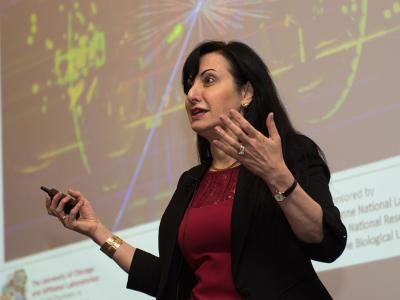 Photo by Rob Hart Three members of the University of Chicago faculty were named as 2017 fellows of the American Association for the Advancement of Science. Fellows are elected by AAAS members for their scientifically or socially distinguished efforts to advance science and its applications. Marcela Carena, a professor of physics and the Enrico Fermi Institute and the Kavli Institute for Cosmological Physics, was named "for distinguished contributions to high-energy particle field theory, especially detection of Higgs fields, supersymmetry, electroweak baryogenesis, dark matter and extra dimensions." Carena's research explores the possible connections between particle physics, supersymmetry, unification and dark matter, including how to explain the matter-antimatter asymmetry observed in the universe using the Large Hadron Collider at CERN. Head of the Theoretical Physics Department at the Fermi National Accelerator Laboratory, she is a pioneer in exploring how the direct search for Higgs bosons at the Large Hadron Collider and the search for dark matter in deep underground experiments - such as the Deep Underground Neutrino Experiment currently underway at Fermilab - could complement one another. Don Q. Lamb, the Robert A. Millikan Distinguished Service Professor of Astronomy and Astrophysics and the College, was named "for outstanding contributions to theoretical astrophysics, especially for seminal contributions to the understanding of supernovae and for leadership in the Sloan Digital Sky Survey." His research interests have included the properties of matter at high densities and temperatures, the evolution of white dwarfs and neutron stars, gamma-ray bursts, supernovae and most recently, experiments that use intense lasers to study the origin of the magnetic fields in the universe. He played a key role in founding the Sloan Digital Sky Survey and was the co-leader and Mission Scientist for the NASA High Energy Transient Explorer. Head of the Flash Center for Computational Science, Lamb is also affiliated with the Enrico Fermi Institute, the Energy Policy Institute of Chicago and the Harris School of Public Policy. Read more >> Related Links: KICP Members: Marcela Carena; Donald Q. Lamb ALMA follow up of SPT discovered galaxies Phys.org, December 12, 2017 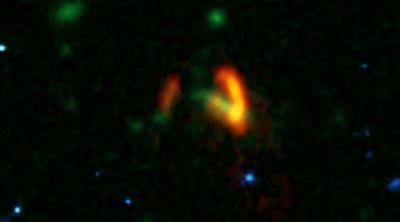 Credit: ALMA (ESO/NAOJ/NRAO), Marrone, et al.; B. Saxton (NRAO/AUI/NSF); NASA/ESA Hubble ALMA finds massive primordial galaxies swimming in vast ocean of dark matter Astronomers expect that the first galaxies, those that formed just a few hundred million years after the Big Bang, would share many similarities with some of the dwarf galaxies we see in the nearby universe today. These early agglomerations of a few billion stars would then become the building blocks of the larger galaxies that came to dominate the universe after the first few billion years. Ongoing observations with the Atacama Large Millimeter/submillimeter Array (ALMA), however, have discovered surprising examples of massive, star-filled galaxies seen when the cosmos was less than a billion years old. This suggests that smaller galactic building blocks were able to assemble into large galaxies quite quickly. The latest ALMA observations push back this epoch of massive-galaxy formation even further by identifying two giant galaxies seen when the universe was only 780 million years old, or about 5 percent its current age. ALMA also revealed that these uncommonly large galaxies are nestled inside an even-more-massive cosmic structure, a halo of dark matter several trillion times more massive than the sun. The two galaxies are in such close proximity - less than the distance from the Earth to the center of our galaxy - that they will shortly merge to form the largest galaxy ever observed at that period in cosmic history. This discovery provides new details about the emergence of large galaxies and the role that dark matter plays in assembling the most massive structures in the universe. The researchers report their findings in the journal Nature ("Galaxy growth in a massive halo in the first billion years of cosmic history"). "With these exquisite ALMA observations, astronomers are seeing the most massive galaxy known in the first billion years of the universe in the process of assembling itself," said Dan Marrone, associate professor of astronomy at the University of Arizona in Tucson and lead author on the paper. Astronomers are seeing these galaxies during a period of cosmic history known as the Epoch of Reionization, when most of intergalactic space was suffused with an obscuring fog of cold hydrogen gas. As more stars and galaxies formed, their energy eventually ionized the hydrogen between the galaxies, revealing the universe as we see it today. "We usually view that as the time of little galaxies working hard to chew away at the neutral intergalactic medium," said Marrone. "Mounting observational evidence with ALMA, however, has helped to reshape that story and continues to push back the time at which truly massive galaxies first emerged in the universe." The galaxies that Marrone and his team studied, collectively known as SPT0311-58, were originally identified as a single source by the South Pole Telescope. These first observations indicated that this object was very distant and glowing brightly in infrared light, meaning that it was extremely dusty and likely going through a burst of star formation. Subsequent observations with ALMA revealed the distance and dual nature of the object, clearly resolving the pair of interacting galaxies. To make this observation, ALMA had some help from a gravitational lens, which provided an observing boost to the telescope. Gravitational lenses form when an intervening massive object, like a galaxy or galaxy cluster, bends the light from more distant galaxies. They do, however, distort the appearance of the object being studied, requiring sophisticated computer models to reconstruct the image as it would appear in its unaltered state. This "de-lensing" process provided intriguing details about the galaxies, showing that the larger of the two is forming stars at a rate of 2,900 solar masses per year. It also contains about 270 billion times the mass of our sun in gas and nearly 3 billion times the mass of our sun in dust. "That's a whopping large quantity of dust, considering the young age of the system," noted Justin Spilker, a recent graduate of the University of Arizona and now a postdoctoral fellow at the University of Texas at Austin. The astronomers determined that this galaxy's rapid star formation was likely triggered by a close encounter with its slightly smaller companion, which already hosts about 35 billion solar masses of stars and is increasing its rate of starburst at the breakneck pace of 540 solar masses per year. The researchers note that galaxies of this era are "messier" than the ones we see in the nearby universe. Their more jumbled shapes would be due to the vast stores of gas raining down on them and their ongoing interactions and mergers with their neighbors. The new observations also allowed the researchers to infer the presence of a truly massive dark matter halo surrounding both galaxies. Dark matter provides the pull of gravity that causes the universe to collapse into structures (galaxies, groups and clusters of galaxies, etc.). "If you want to see if a galaxy makes sense in our current understanding of cosmology, you want to look at the dark matter halo - the collapsed dark matter structure - in which it resides," said Chris Hayward, associate research scientist at the Center for Computational Astrophysics at the Flatiron Institute in New York City. "Fortunately, we know very well the ratio between dark matter and normal matter in the universe, so we can estimate what the dark matter halo mass must be." By comparing their calculations with current cosmological predictions, the researchers found that this halo is one of the most massive that should exist at that time. "There are more galaxies discovered with the South Pole Telescope that we're following up on," said Joaquin Vieira of the University of Illinois at Urbana-Champaign, "and there is a lot more survey data that we are just starting to analyze. Our hope is to find more objects like this, possibly even more distant ones, to better understand this population of extreme dusty galaxies and especially their relation to the bulk population of galaxies at this epoch." "In any case, our next round of ALMA observations should help us understand how quickly these galaxies came together and improve our understanding of massive galaxy formation during reionization," added Marrone. Read more >> Related Links: KICP Members: John E. Carlstrom; Thomas M. Crawford Scientific projects: South Pole Telescope (SPT) Auger result in the list of scientific breakthroughs of the year Physics World, December 18, 2017 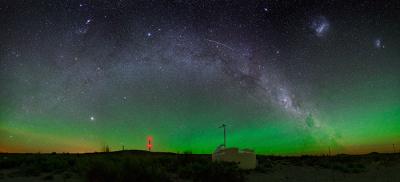 The Physics World top 10 breakthroughs of 2017 is awarded to the Pierre Auger Observatory collaboration for showing that ultra-high-energy cosmic rays come from outside the Milky Way. For decades, astrophysicists have believed that the sources of cosmic rays with energies greater than about 1 EeV (1018eV) could be worked out from the arrival directions of these particles. This is unlike lower energy cosmic rays, which appear to come from all directions after being deflected by the Milky Way's magnetic fields. Now, Pierre Auger's 1600 Cherenkov particle detectors in Argentina have revealed that the arrival rate of ultra-high-energy cosmic rays is greater in one half of the sky. What is more, the excess lies away from the centre of the Milky Way - suggesting that the cosmic rays have extra-galactic origins. Read more >> Related Links: KICP Members: Angela V. Olinto; Paolo Privitera Scientific projects: Pierre Auger Observatory (AUGER) First multimessenger observation of a neutron-star merger is Physics World 2017 Breakthrough of the Year Physics World, December 18, 2017 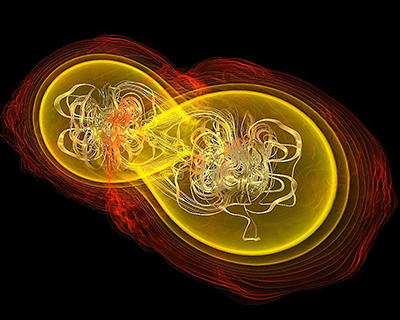 The Physics World 2017 Breakthrough of the Year goes to the international team of astronomers and astrophysicists that ushered in a new era of astronomy by making the first ever multimessenger observation involving gravitational waves. On 17 August 2017 the LIGO-Virgo gravitational-wave detectors, the Fermi Gamma-ray Space Telescope and the INTEGRAL gamma-ray space telescope detected nearly-simultaneous signals. They came from the merger of two neutron stars - an object now called GW 170817. This was the first time that LIGO-Virgo scientists had seen a neutron star merger, but five hours later they had already worked out the location of the source in the sky. Over the next hours and days, more than 70 telescopes were pointed at GW 170817 and a wealth of observations were made in the gamma-ray, X-ray, visible, infrared and radio portions of the electromagnetic spectrum. Astrophysicists also searched for neutrinos, but none were seen. These coordinated observations have already provided a vast amount of information about what happens when neutron stars collide in what is called a "kilonova". The observations have yielded important clues about how heavy elements, such as gold, are produced in the universe. The ability to measure both gravitational waves and visible light from neutron-star mergers has also given a new and independent way of measuring the expansion rate of the universe. In addition, the observation settles a long-standing debate about the origin of short, high-energy, gamma-ray bursts. Read more >> Related Links: KICP Members: Daniel E. Holz Scientific projects: Laser Interferometer Gravitational-wave Observatory (LIGO) |





 Overview
Overview